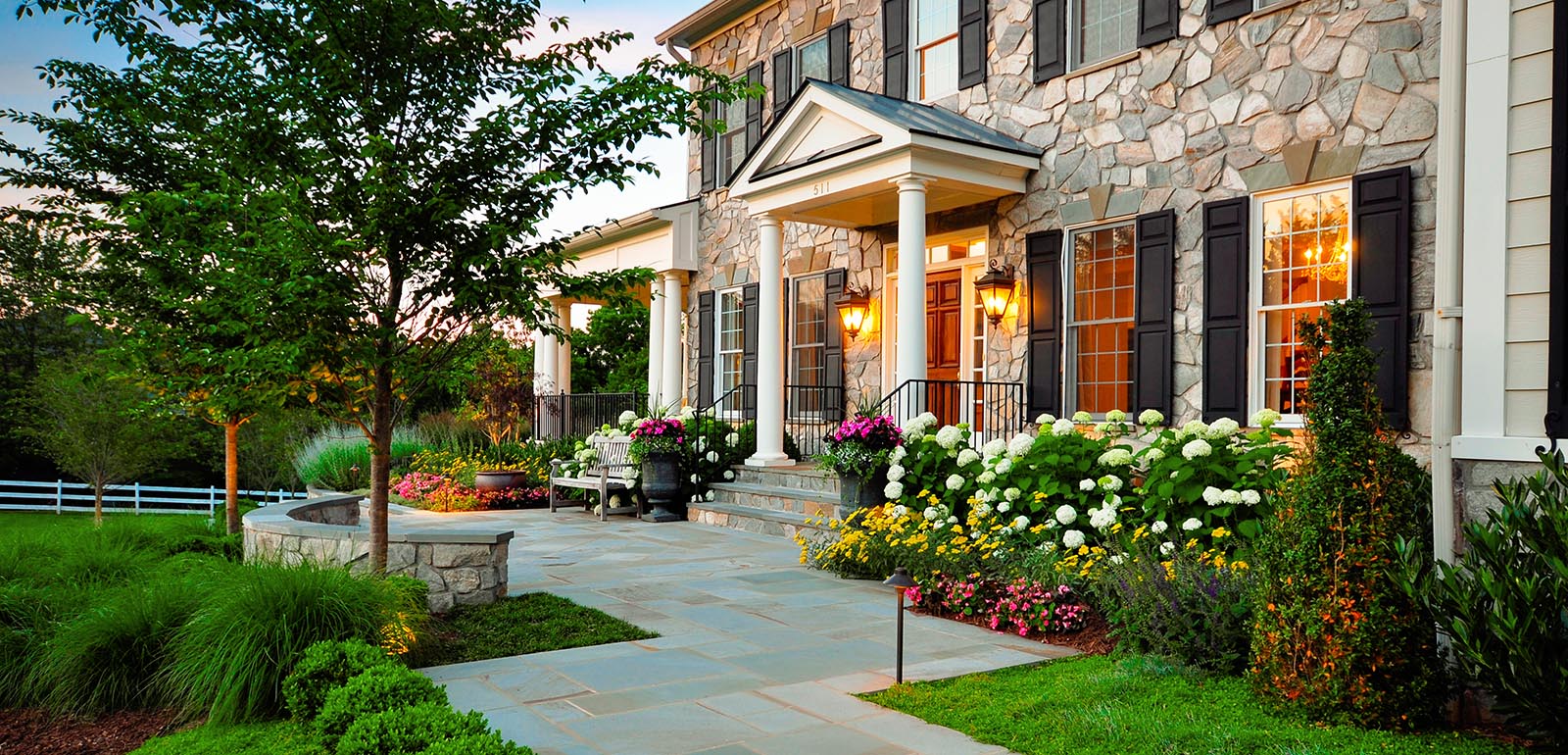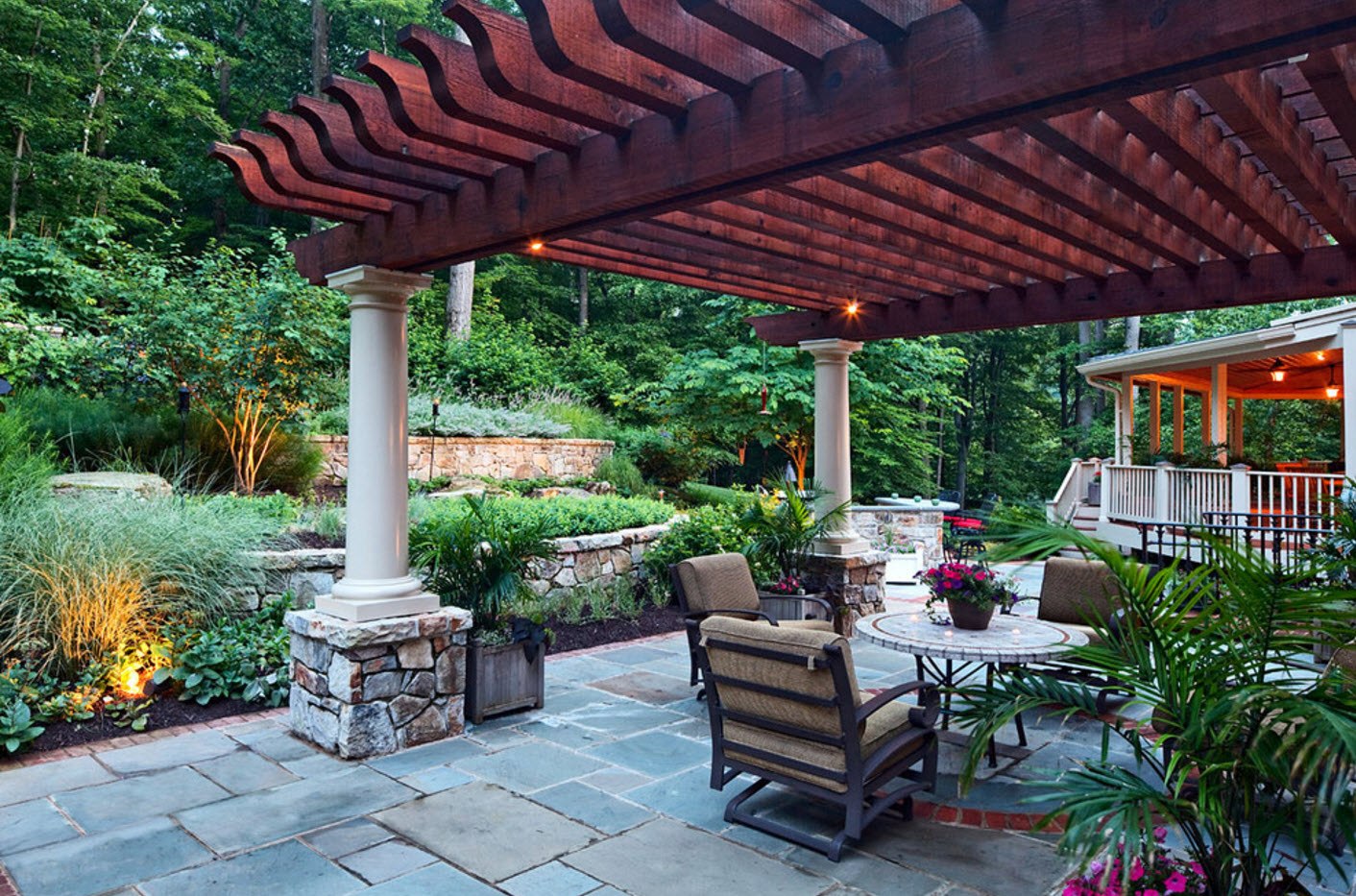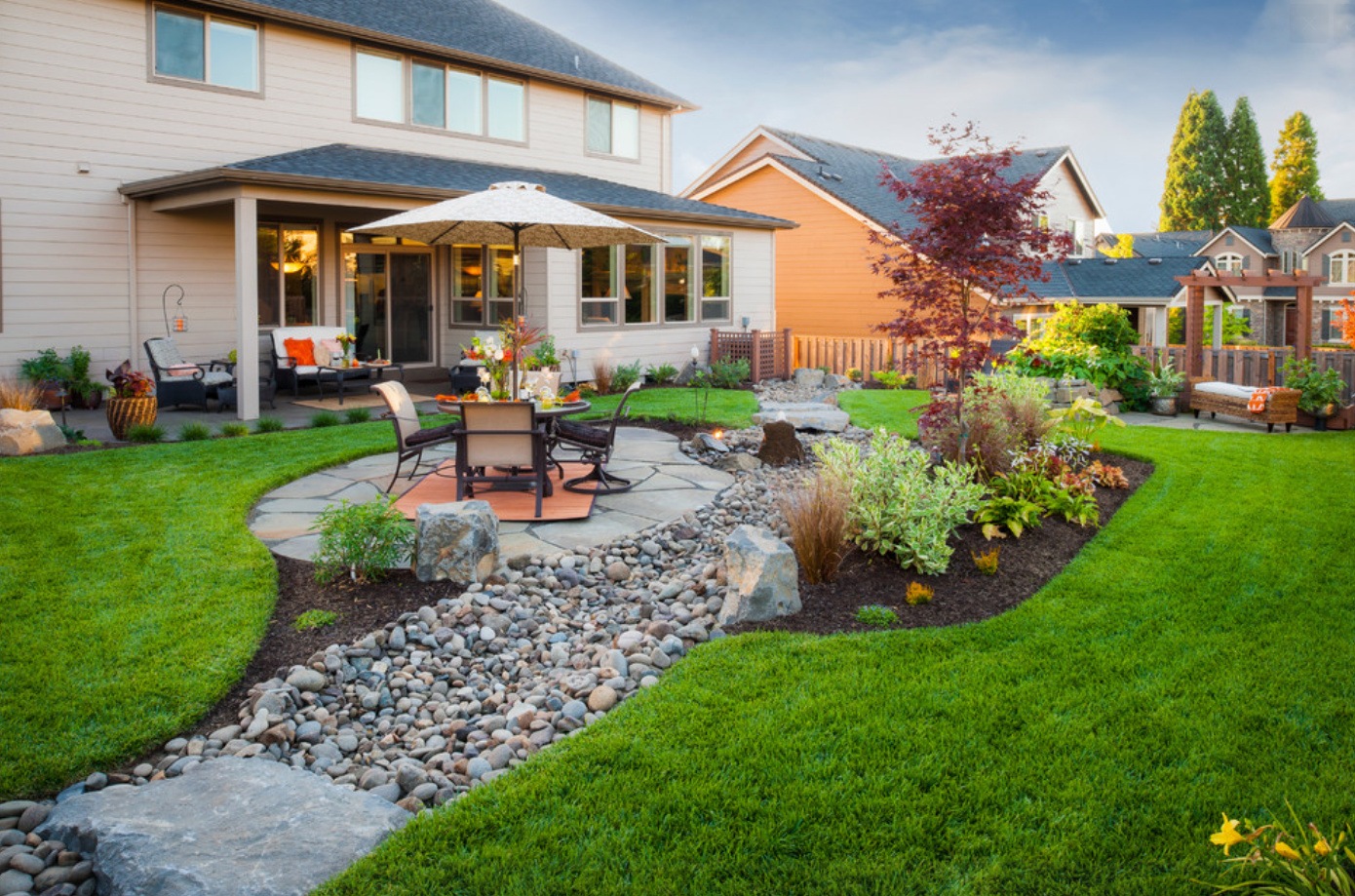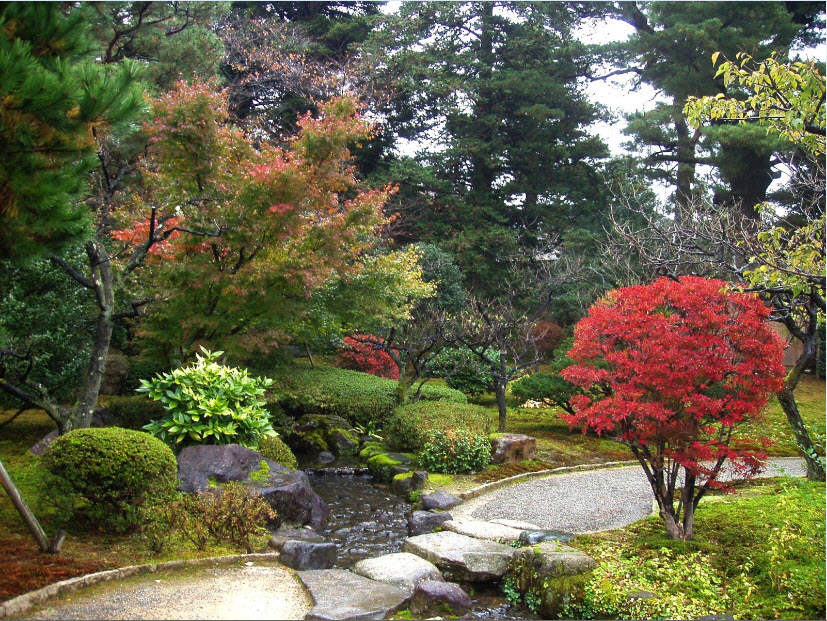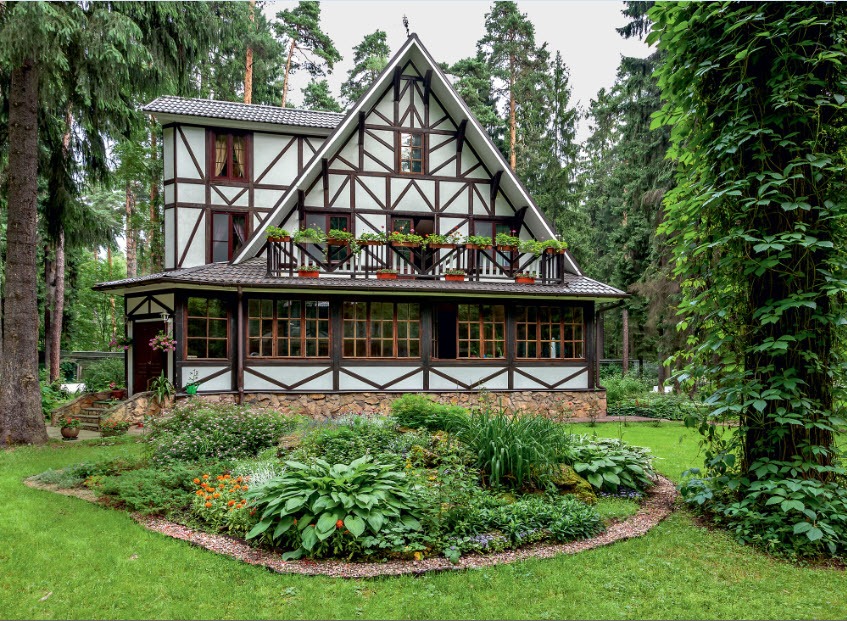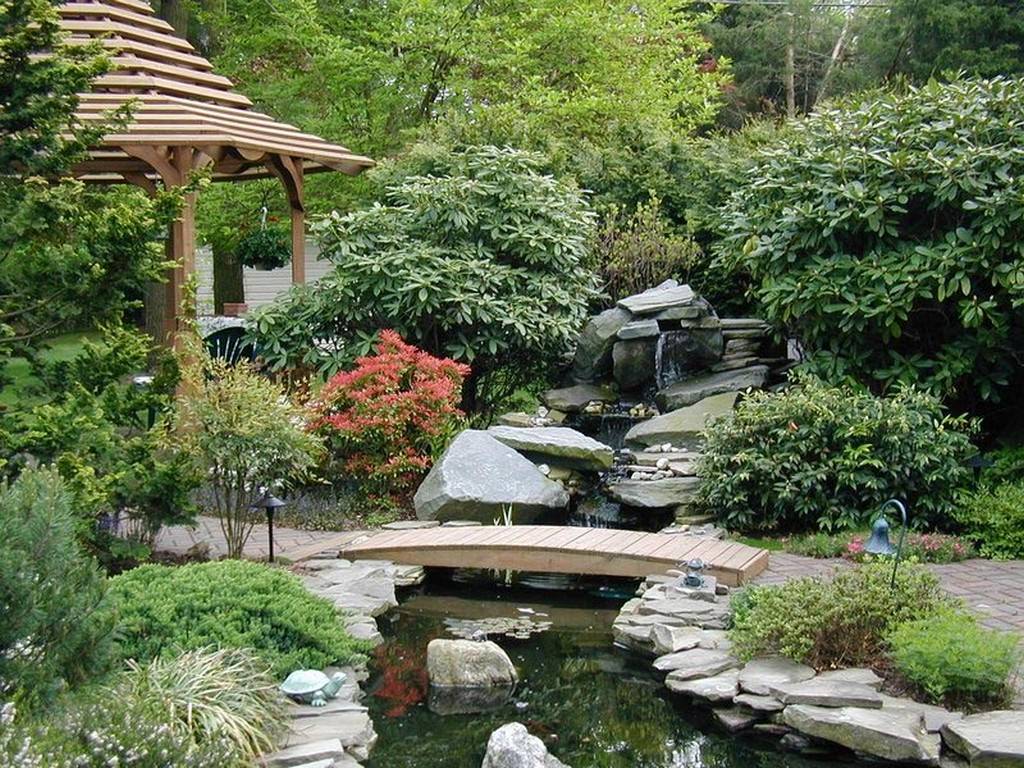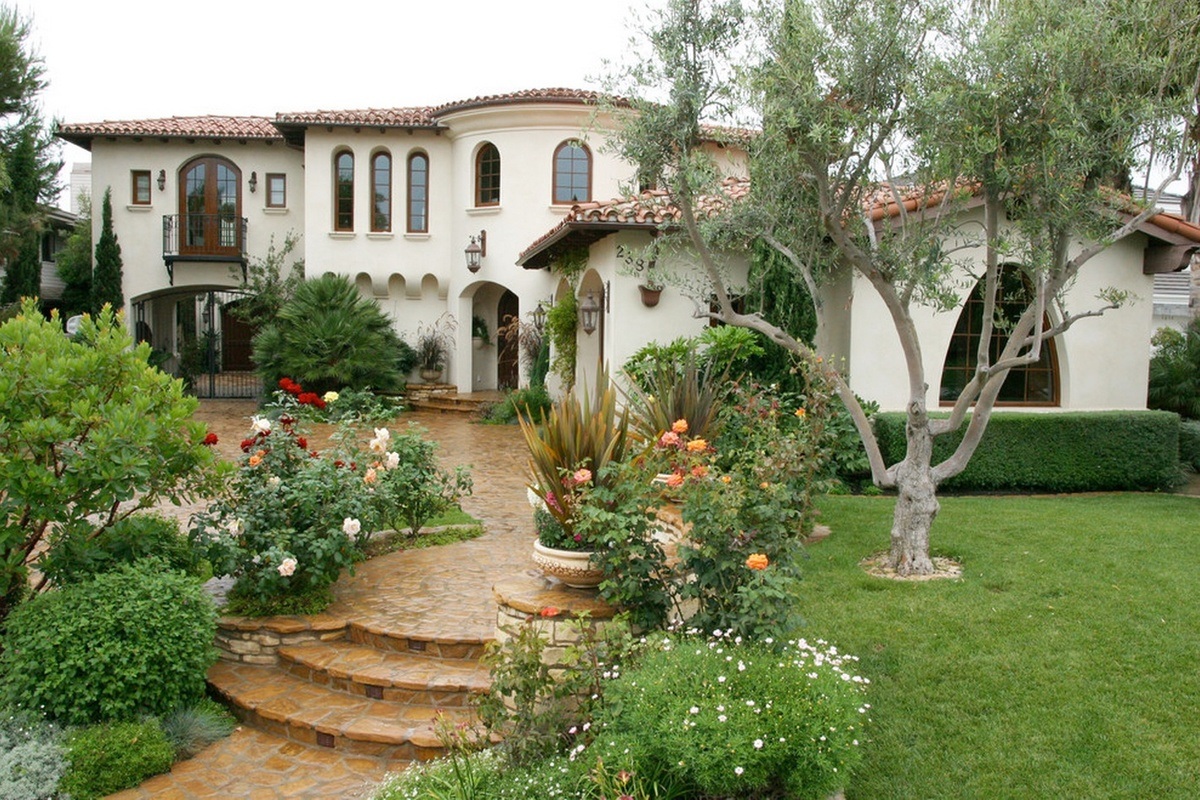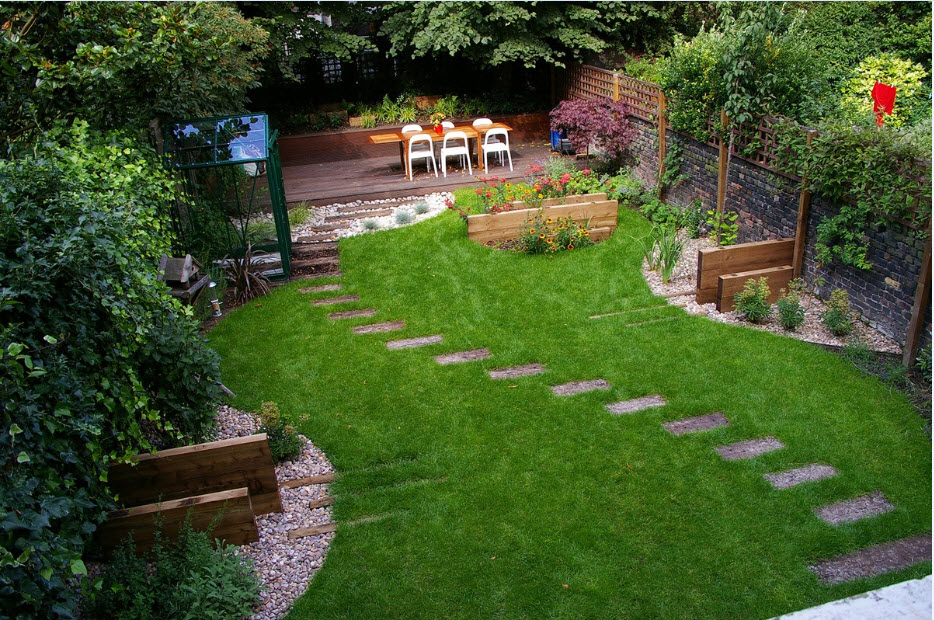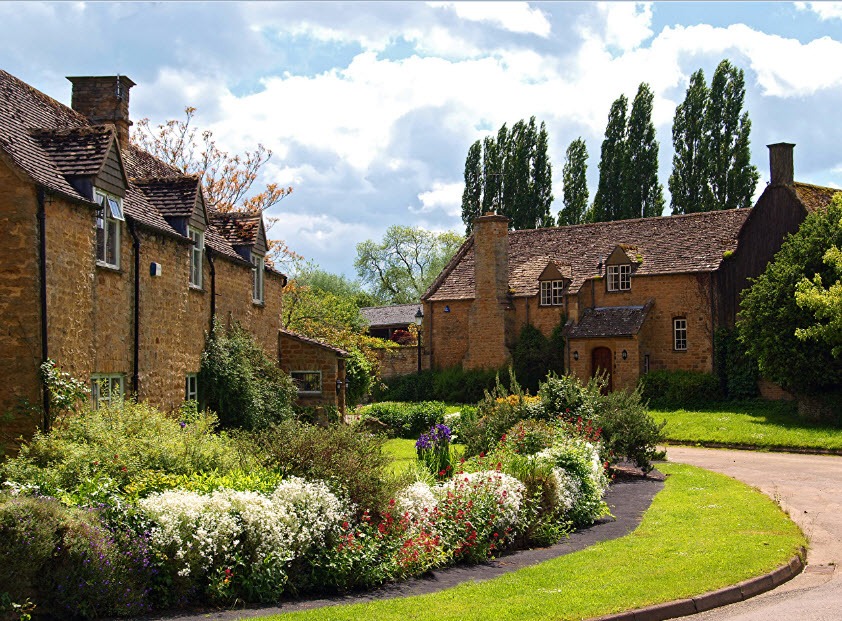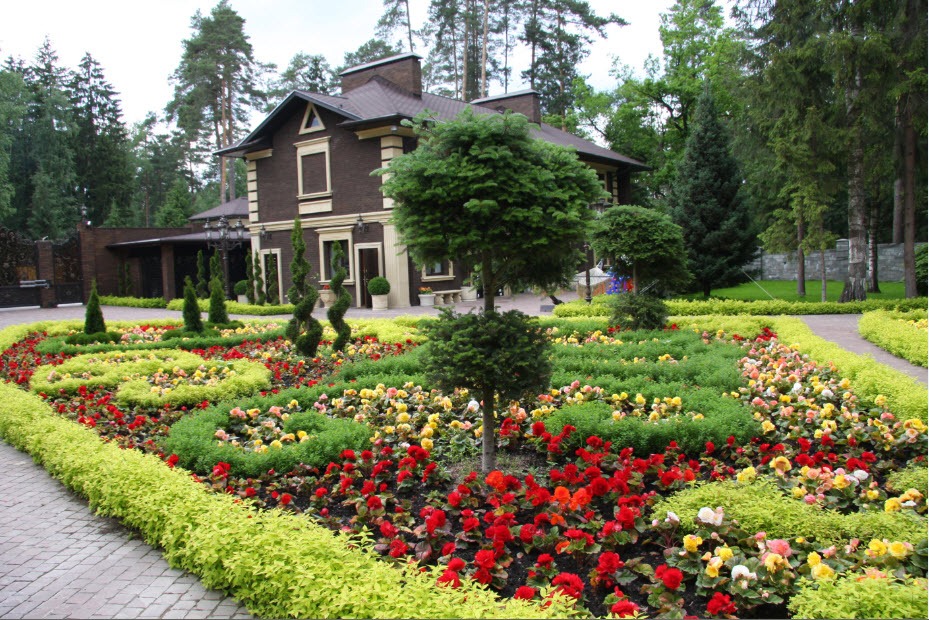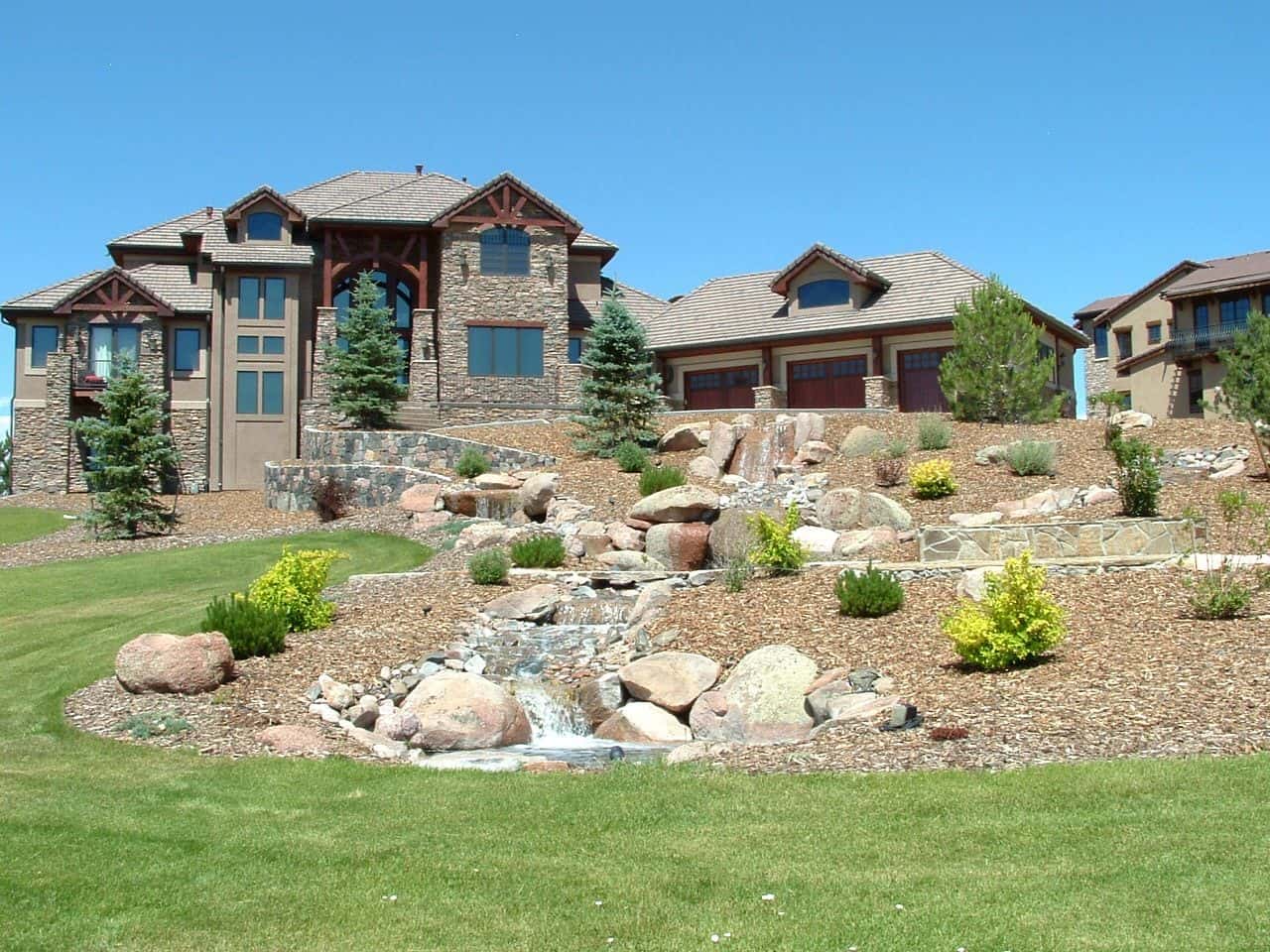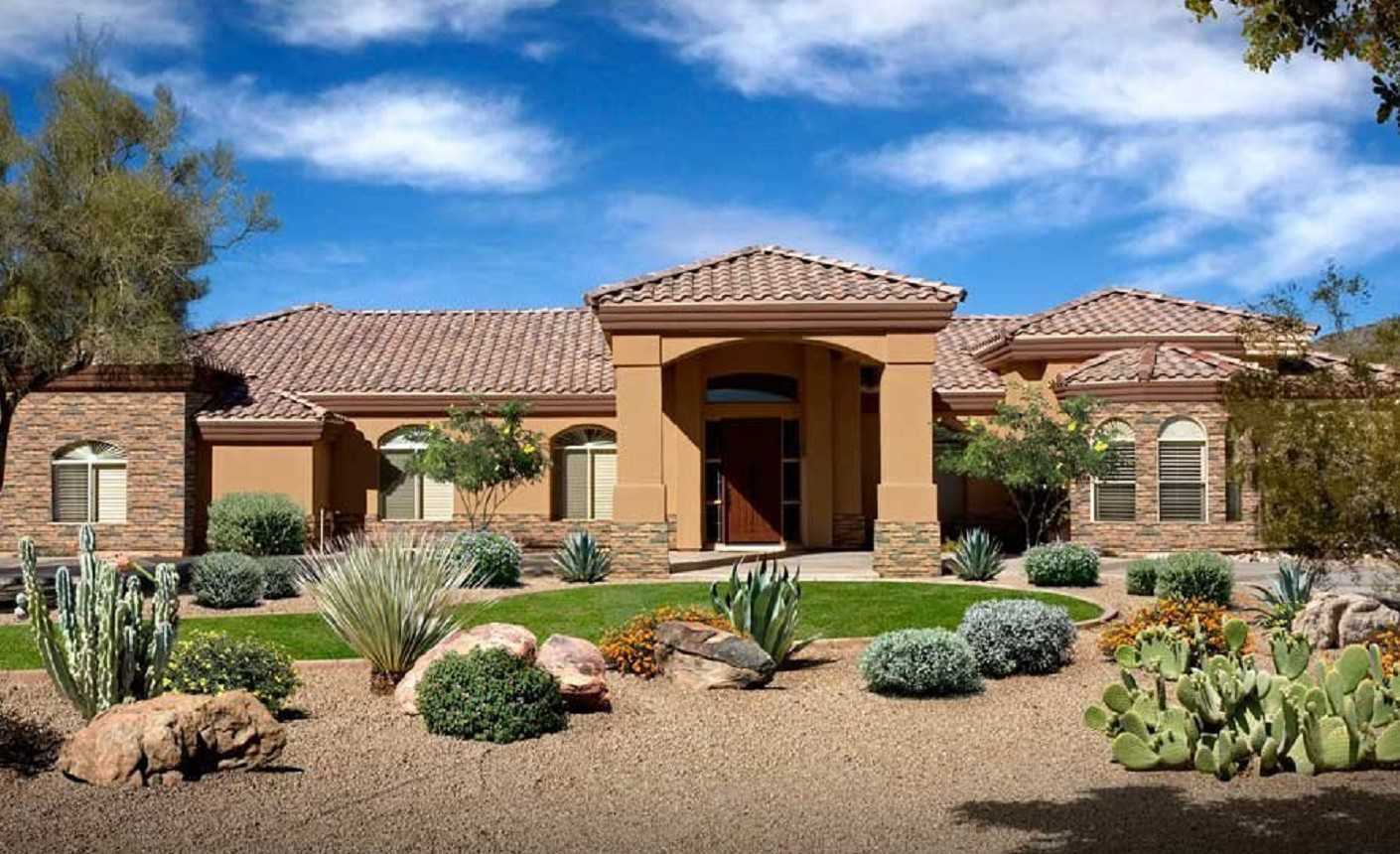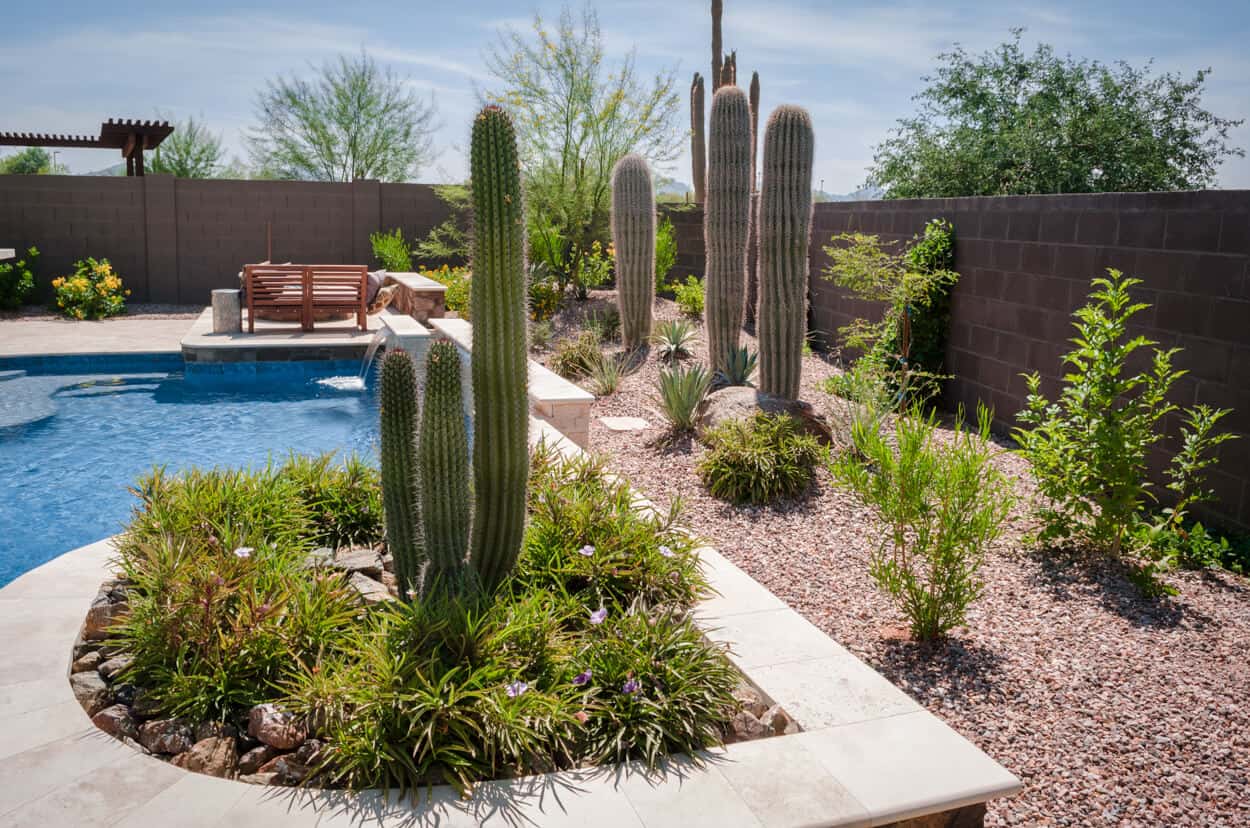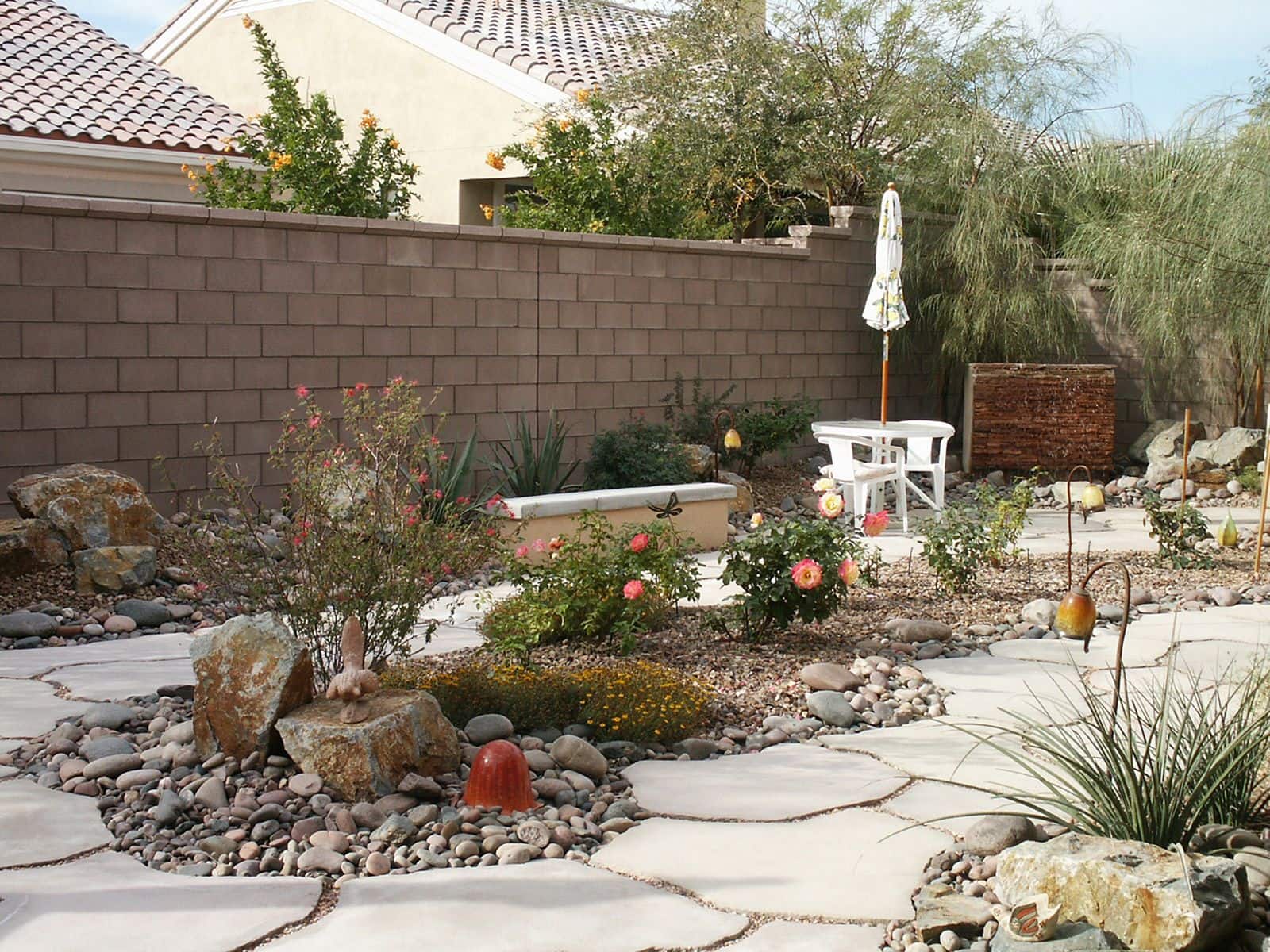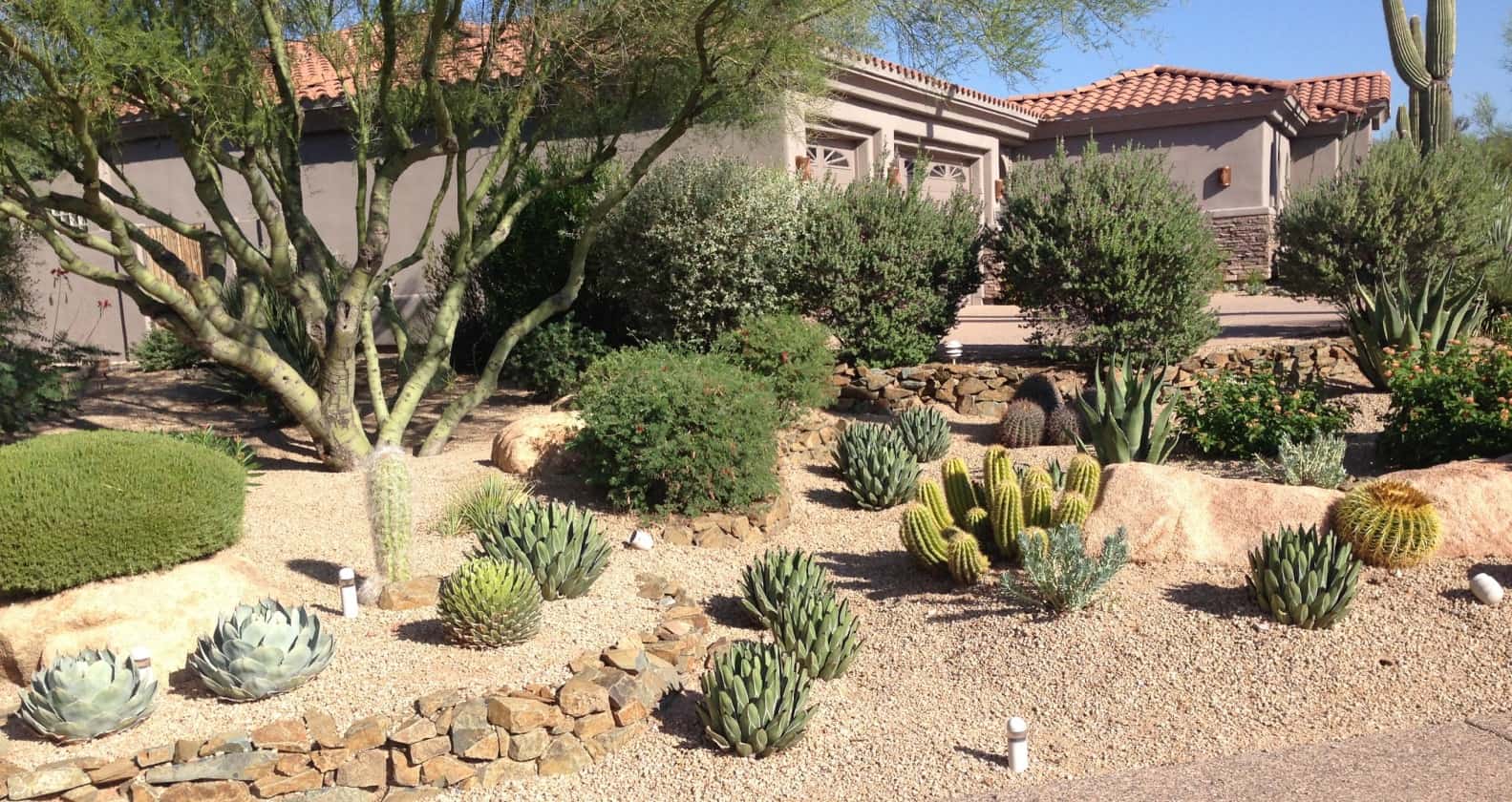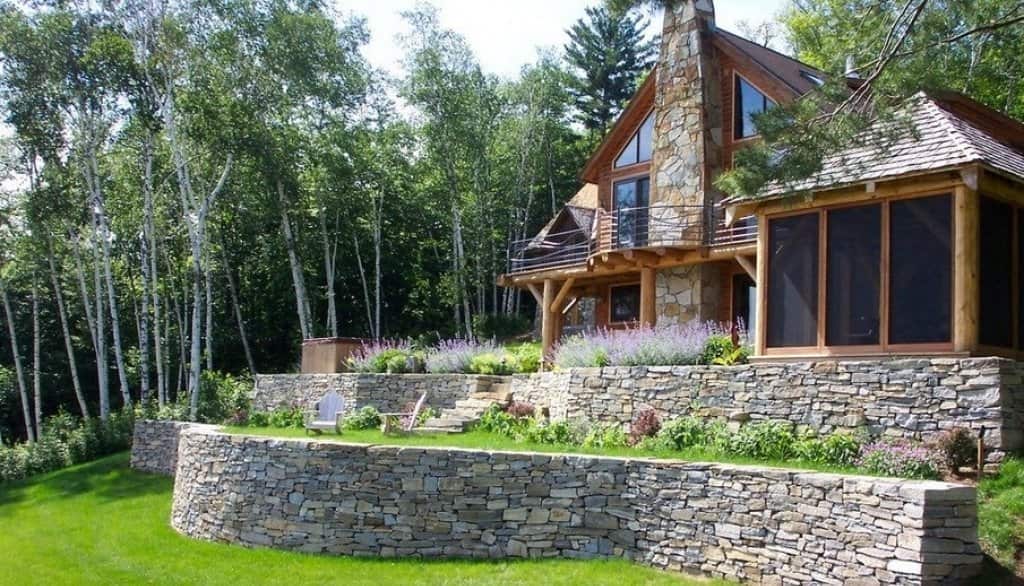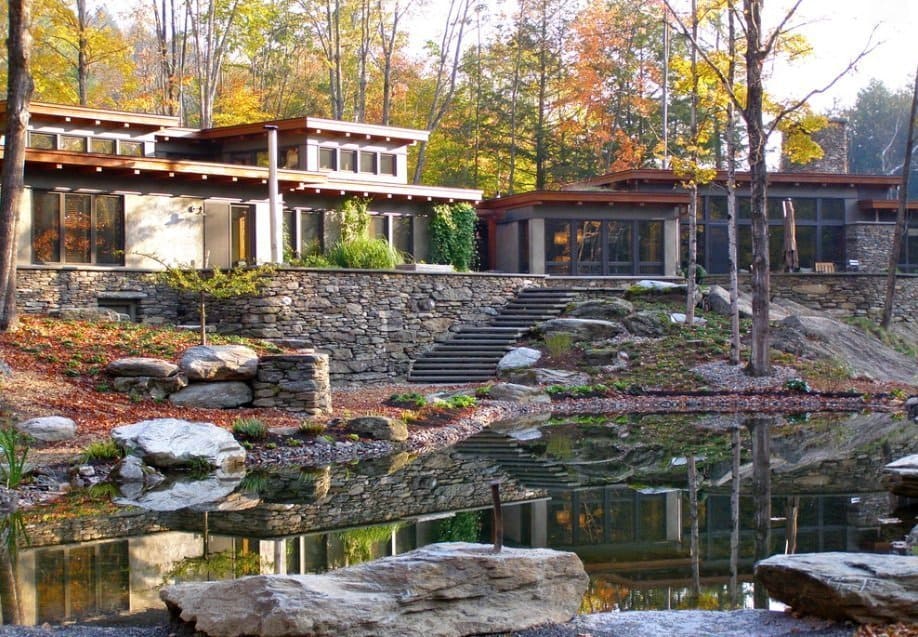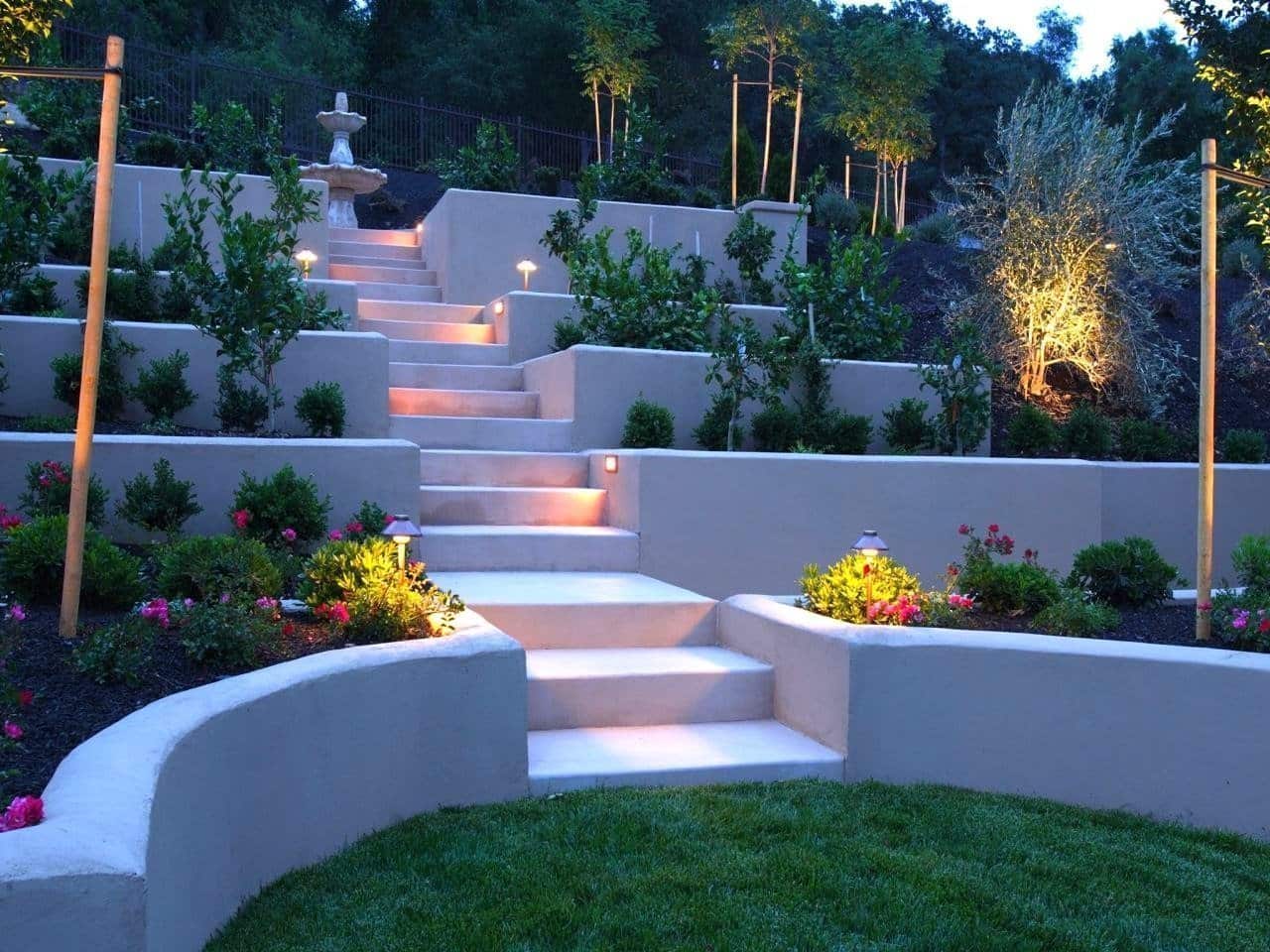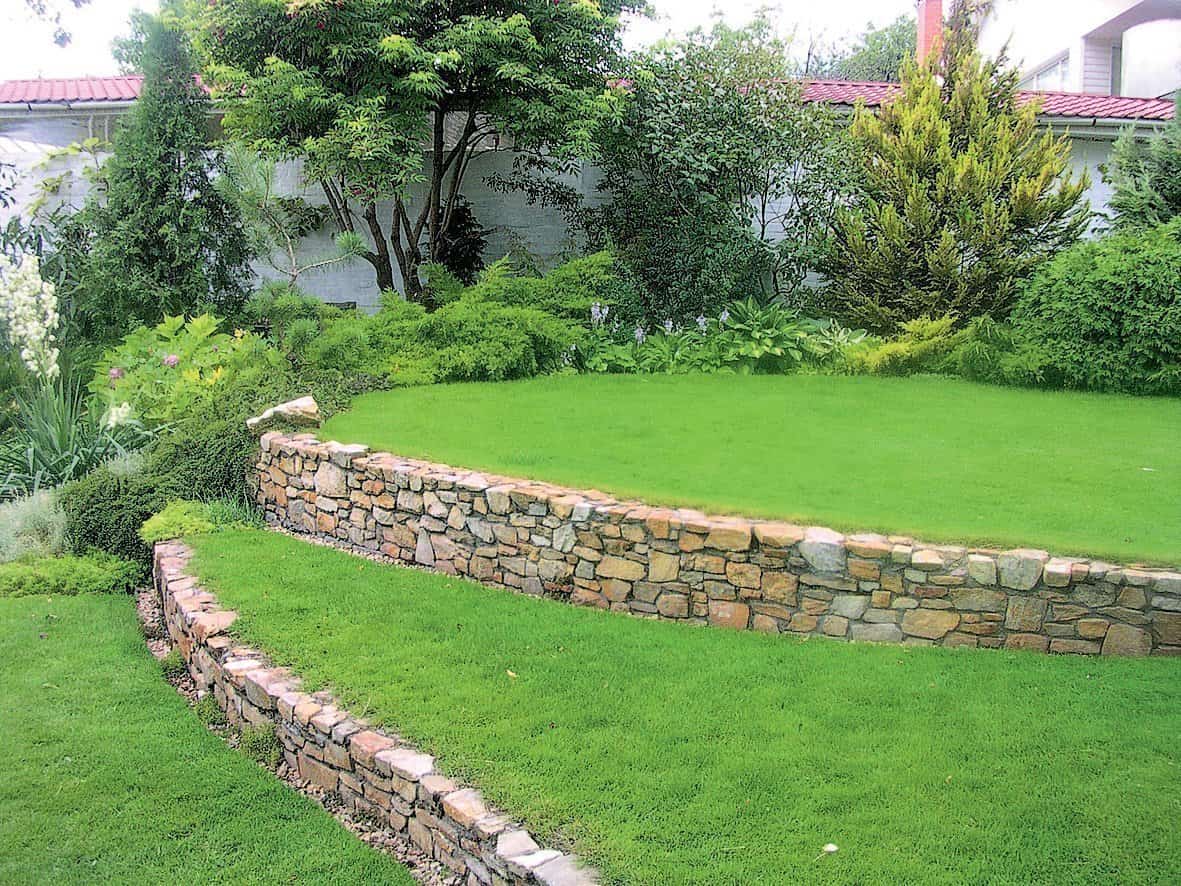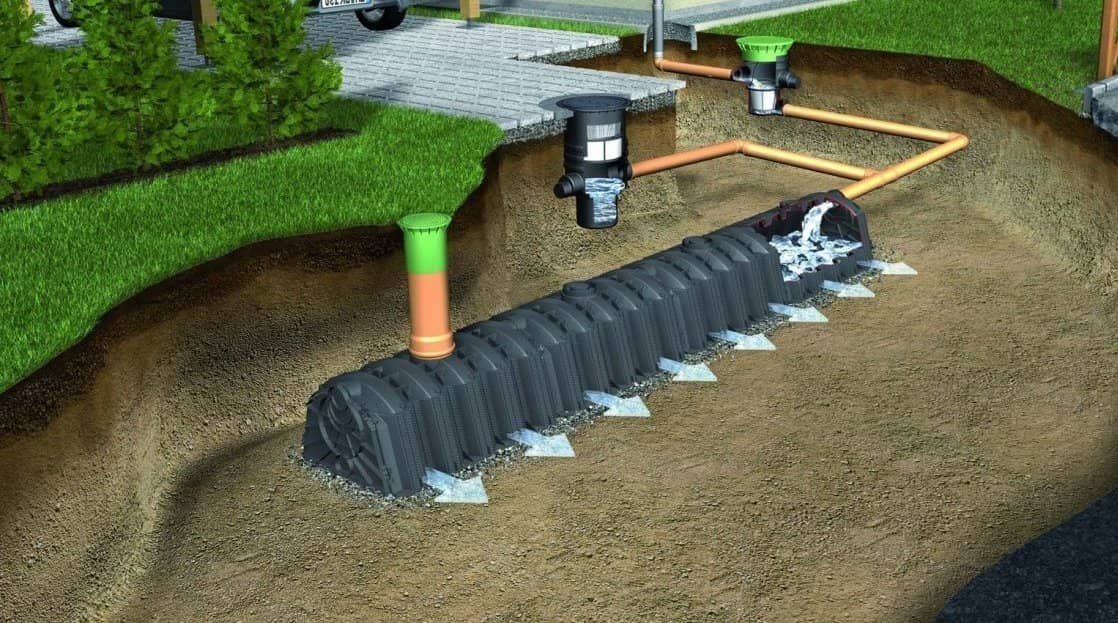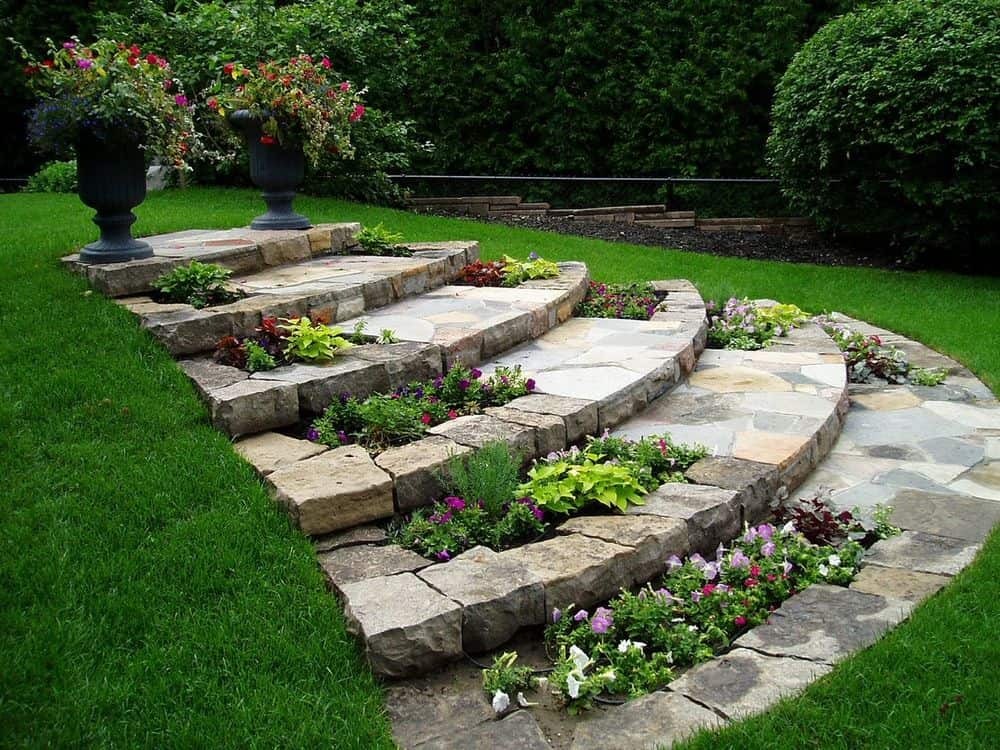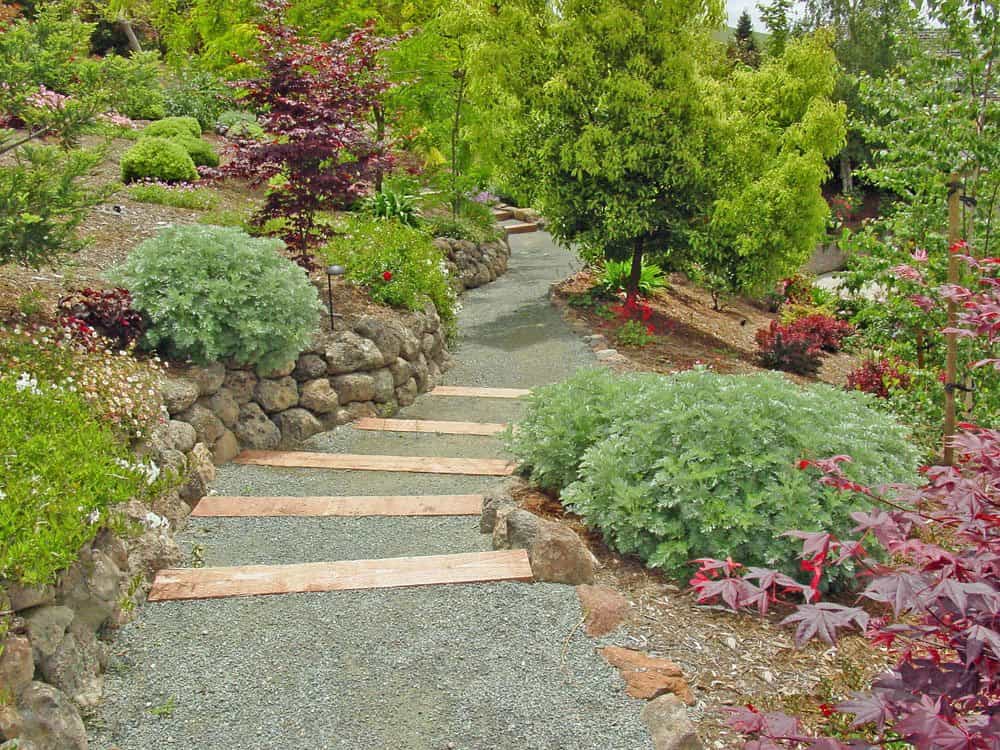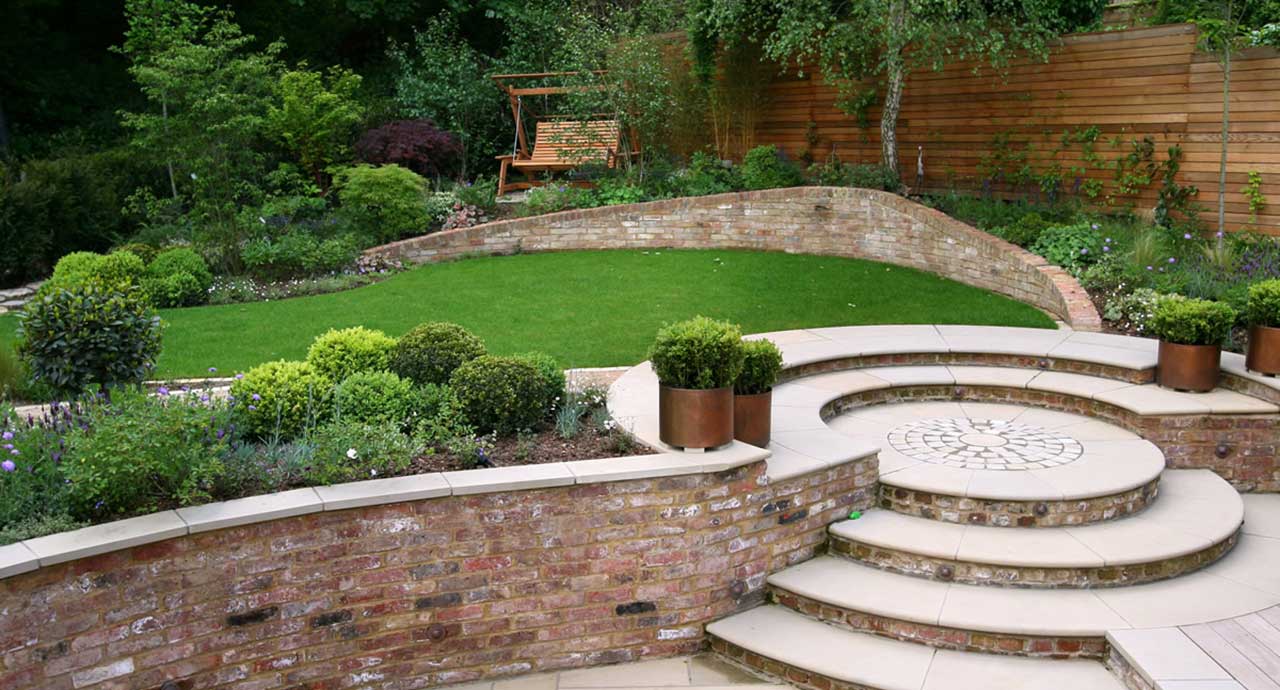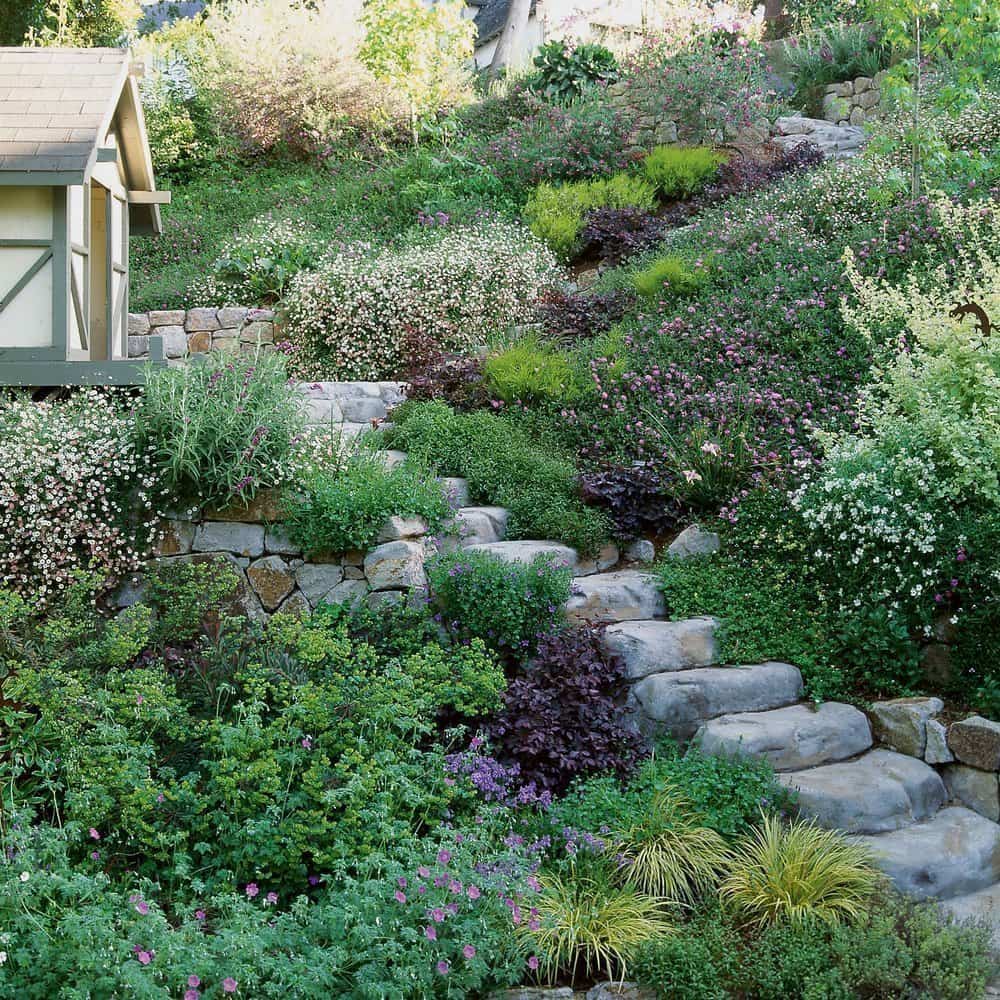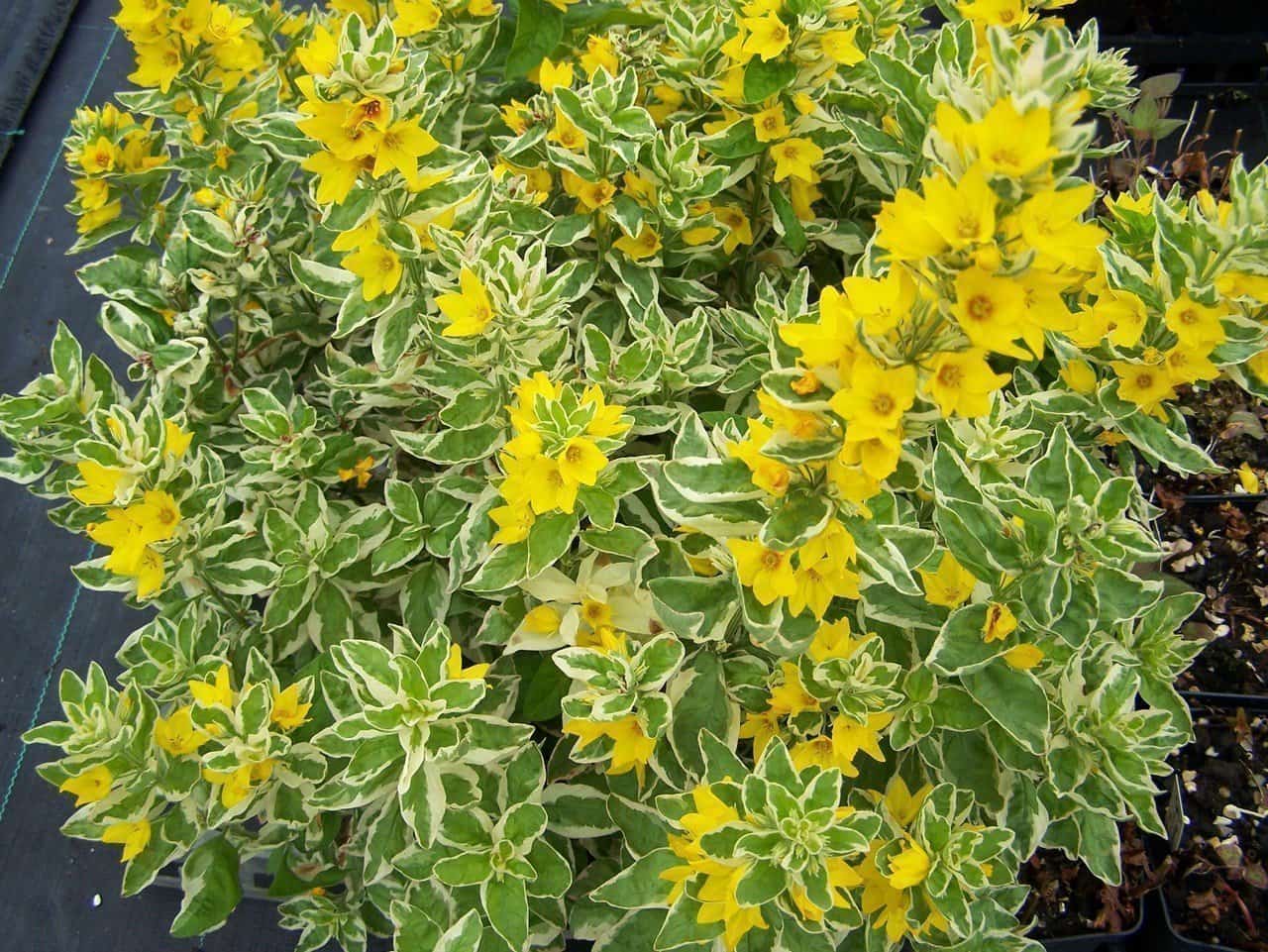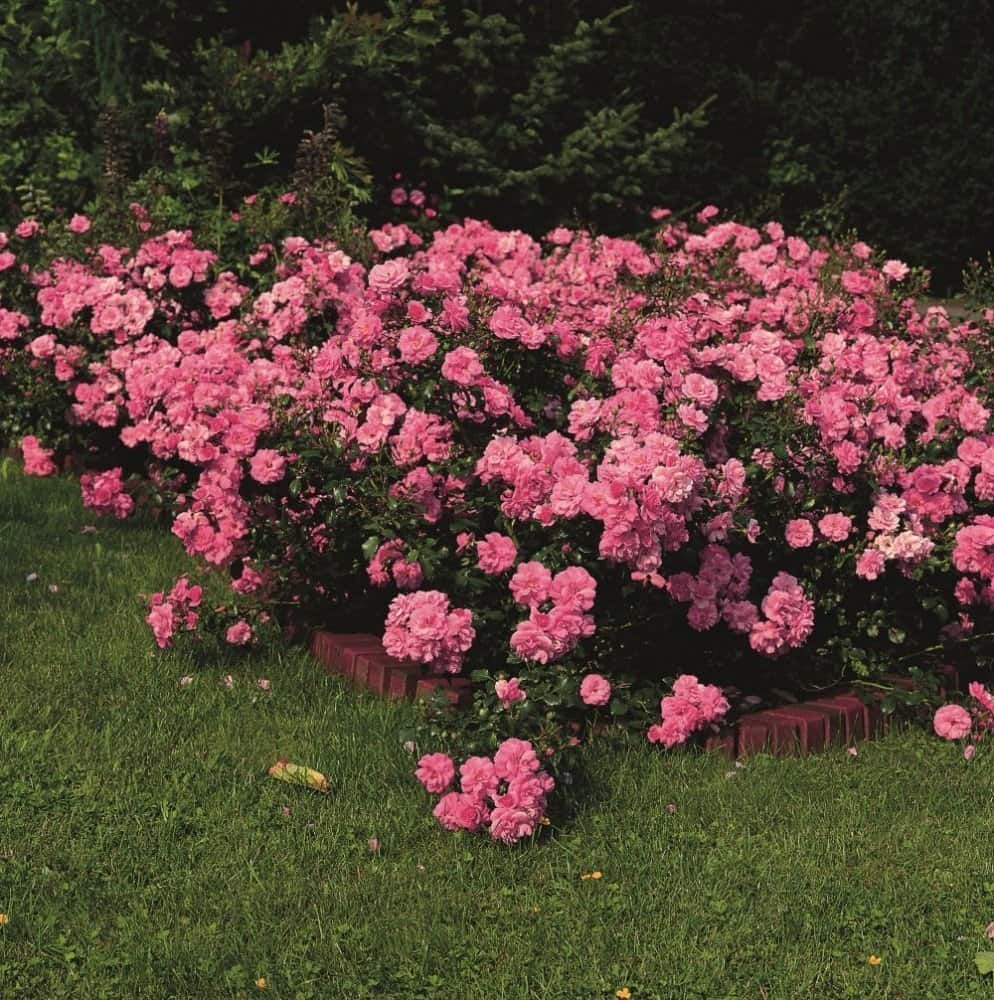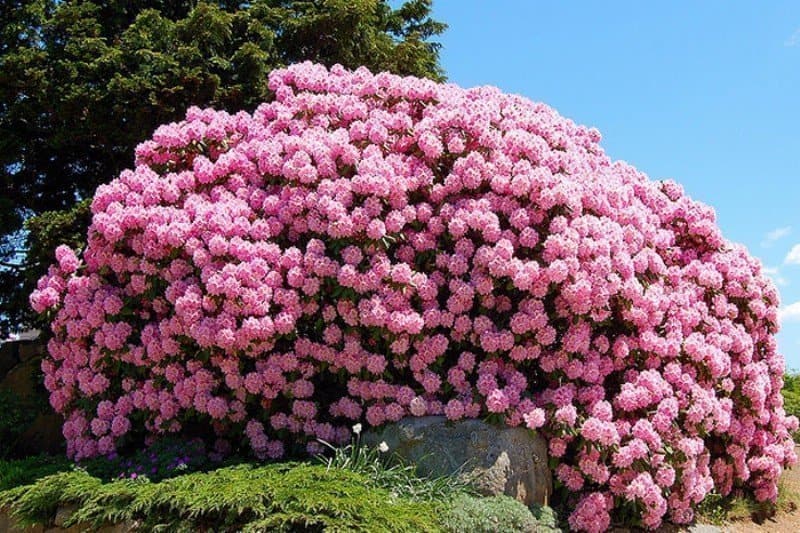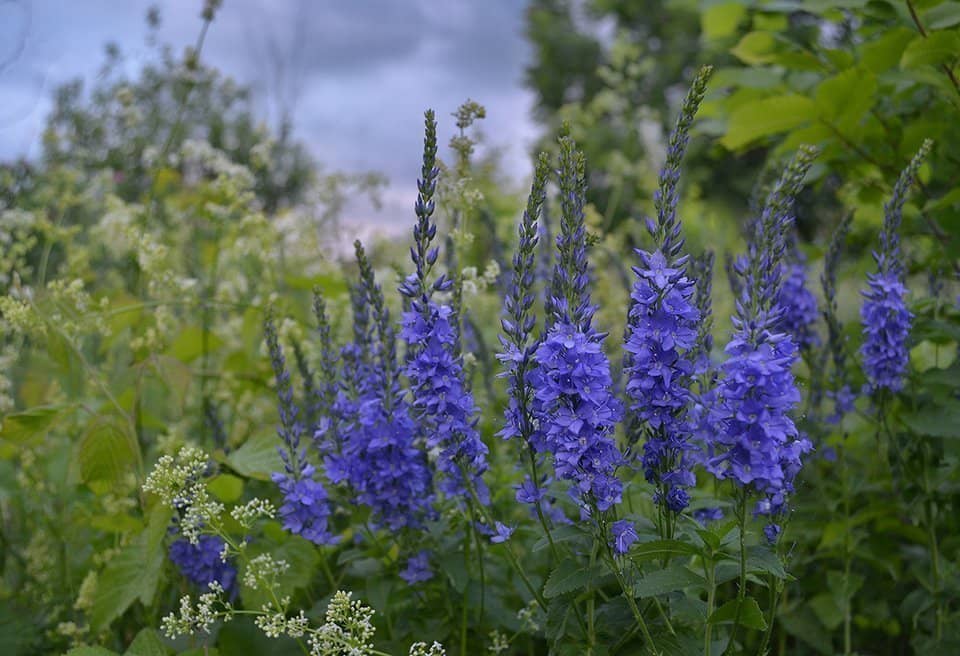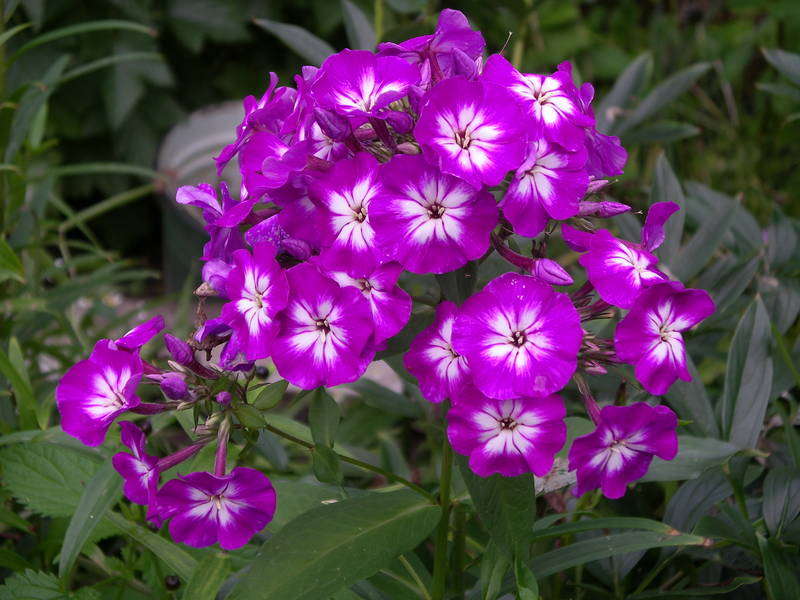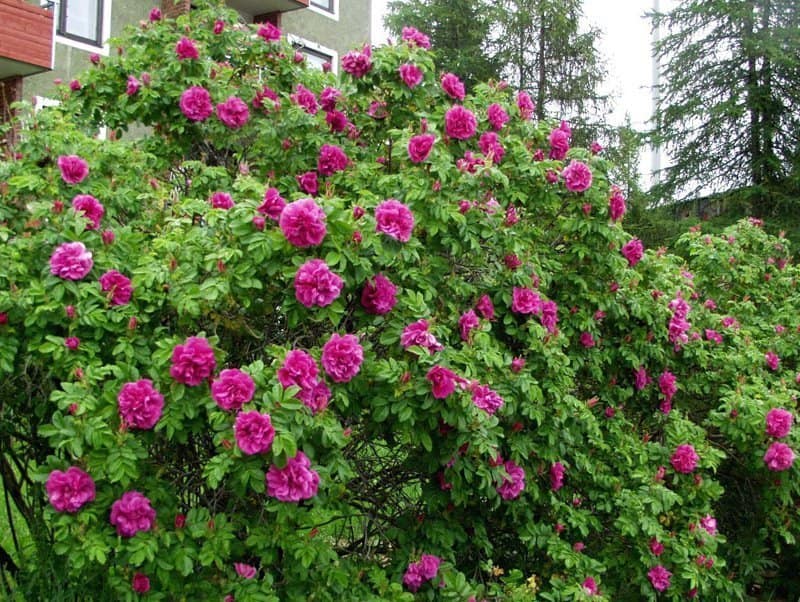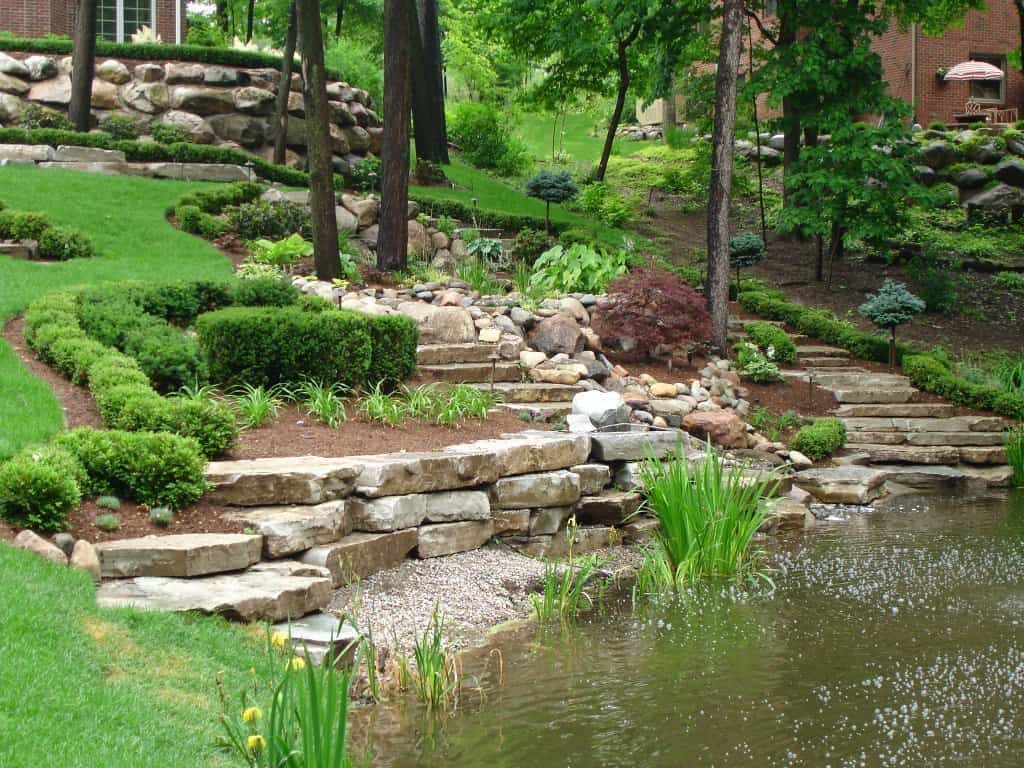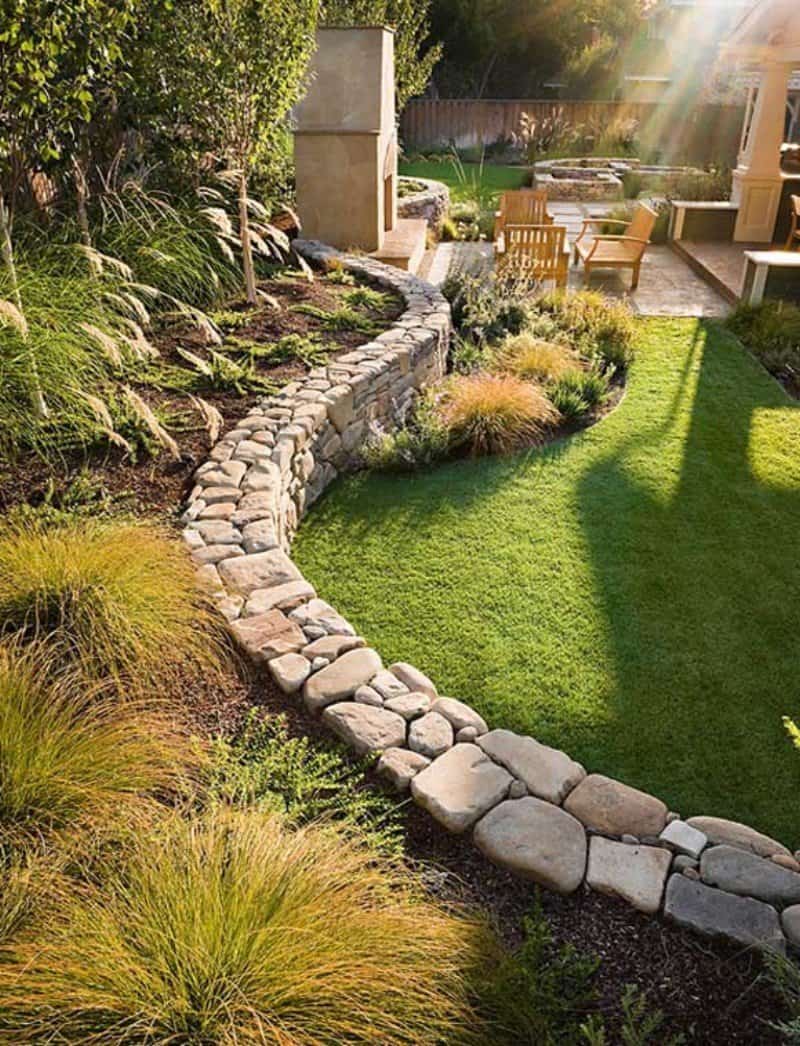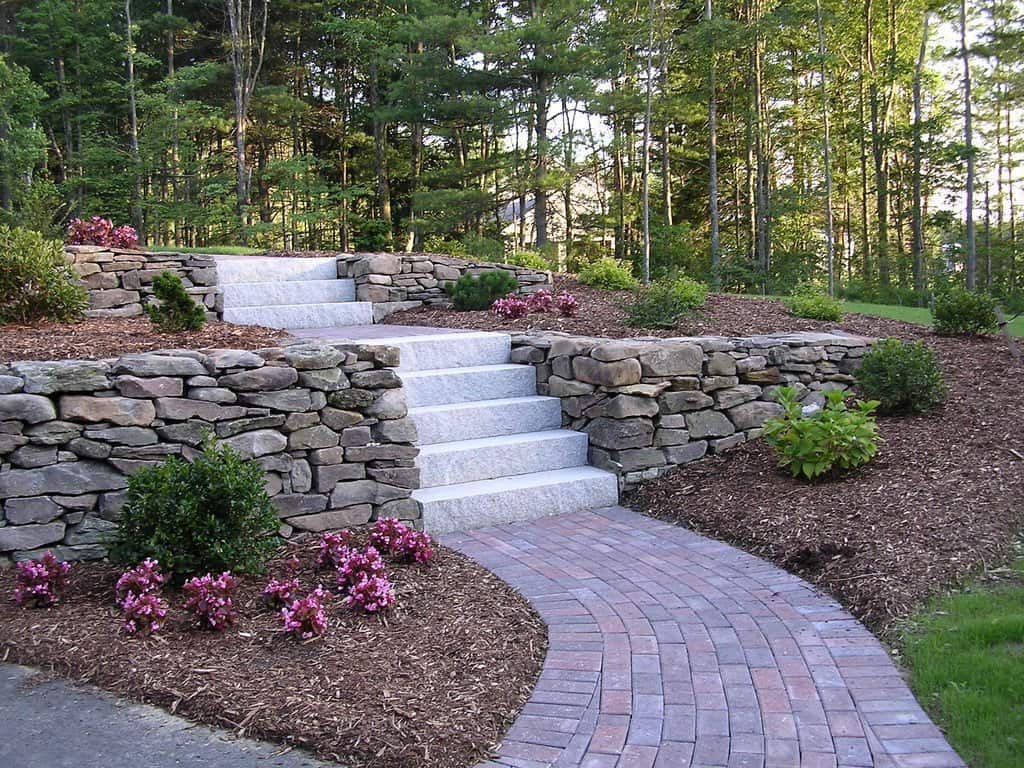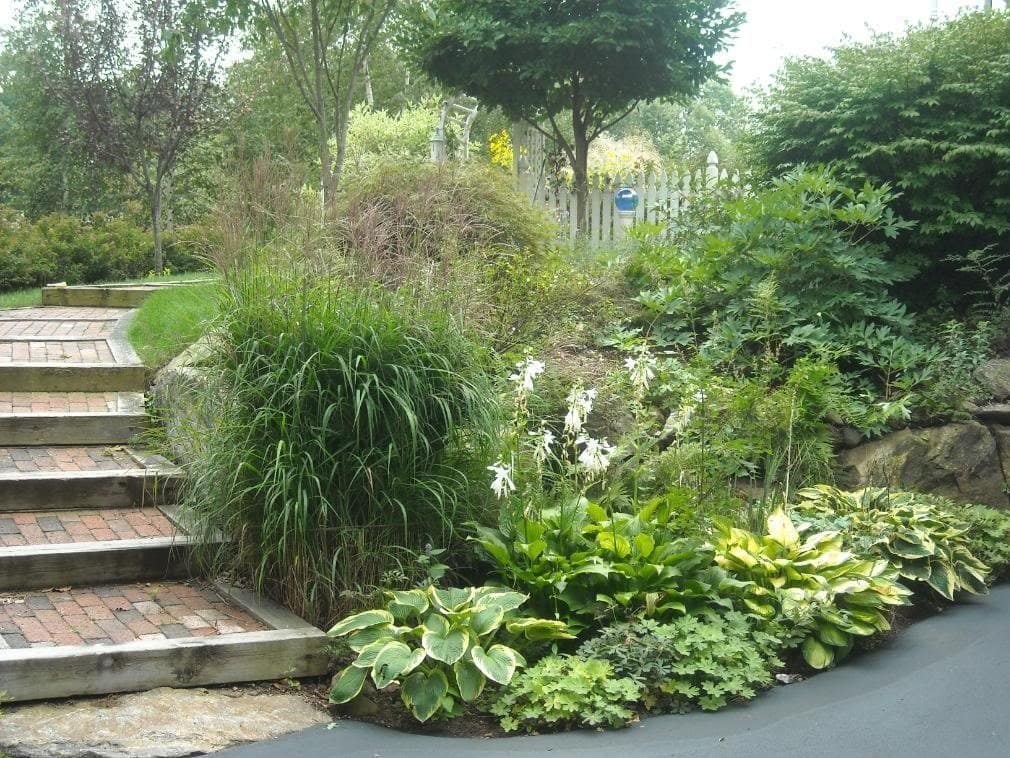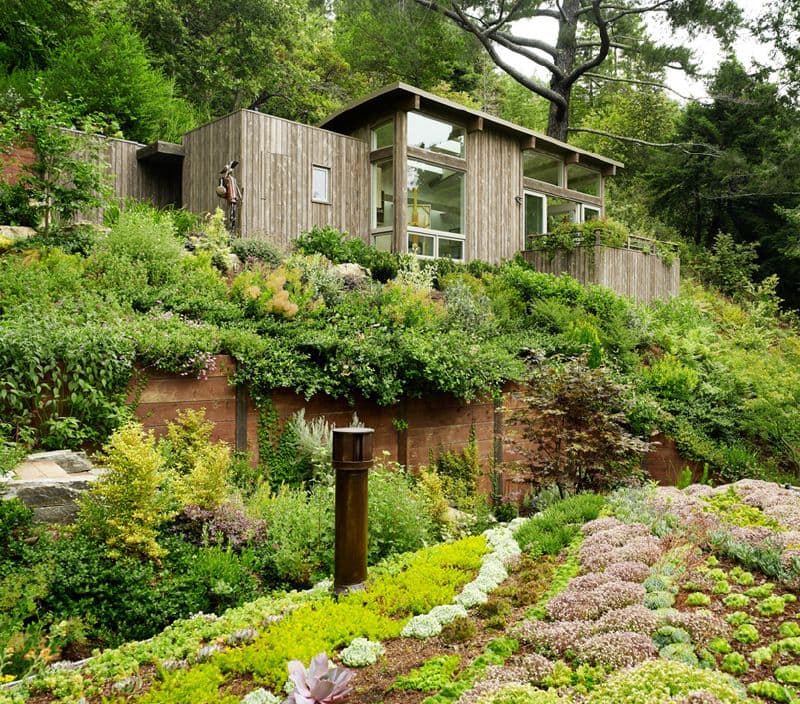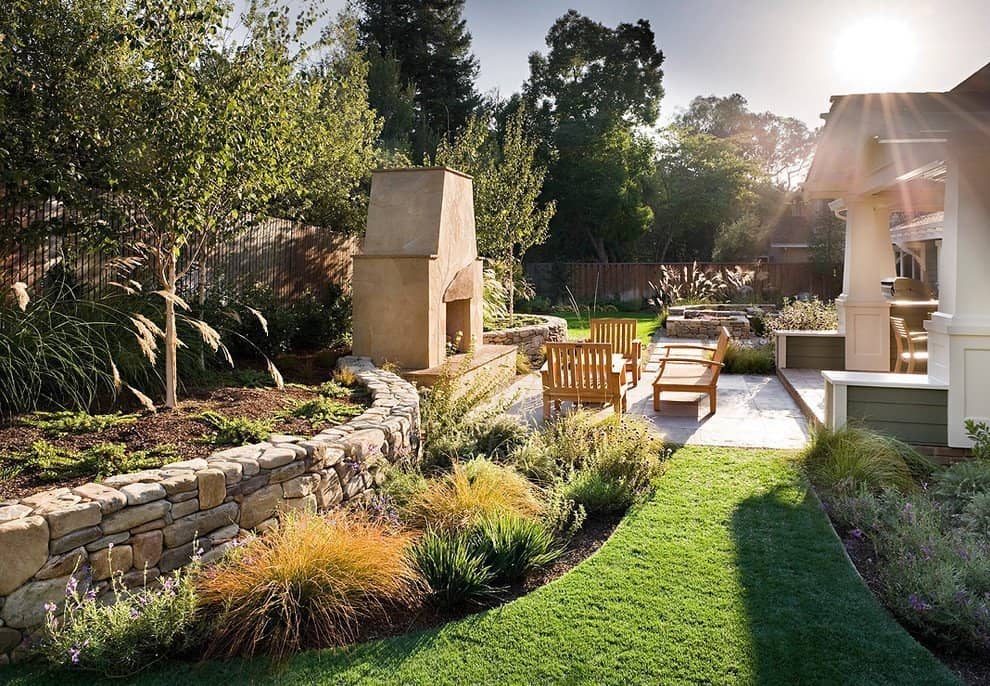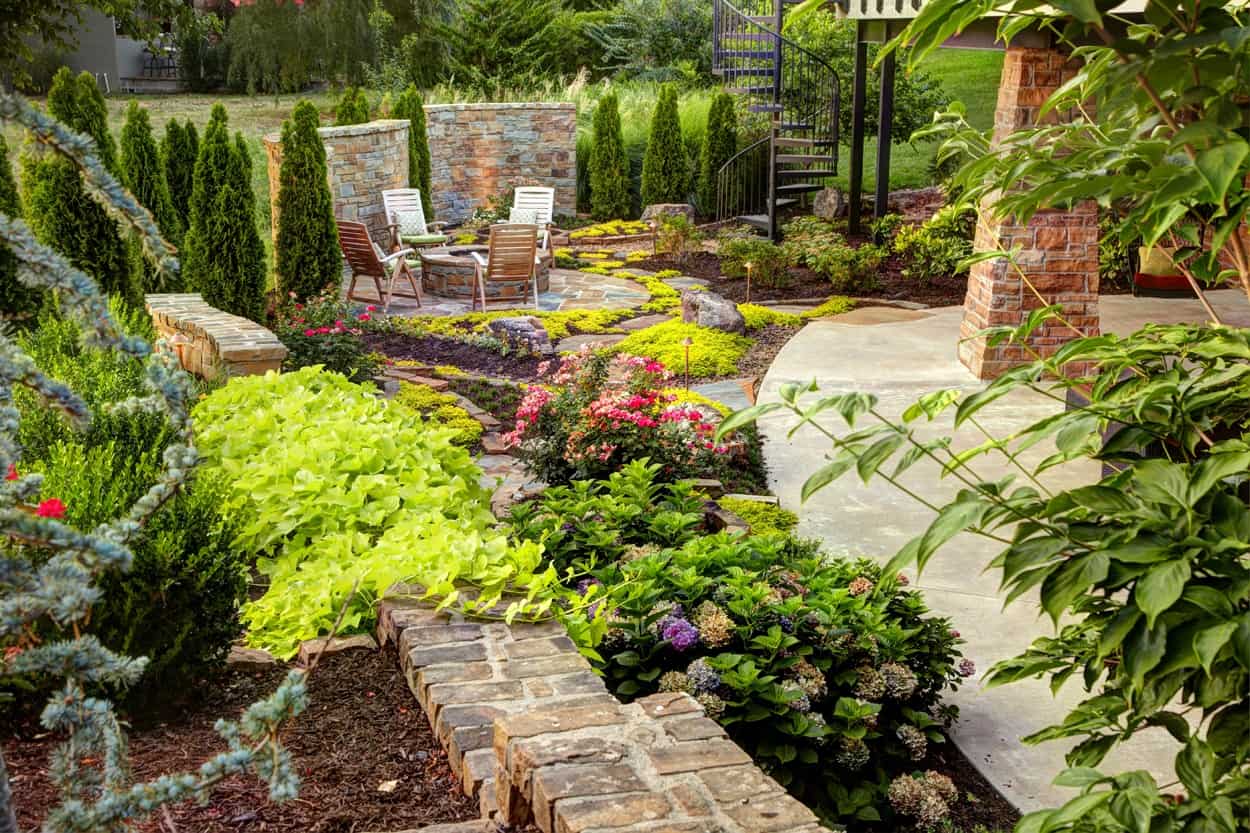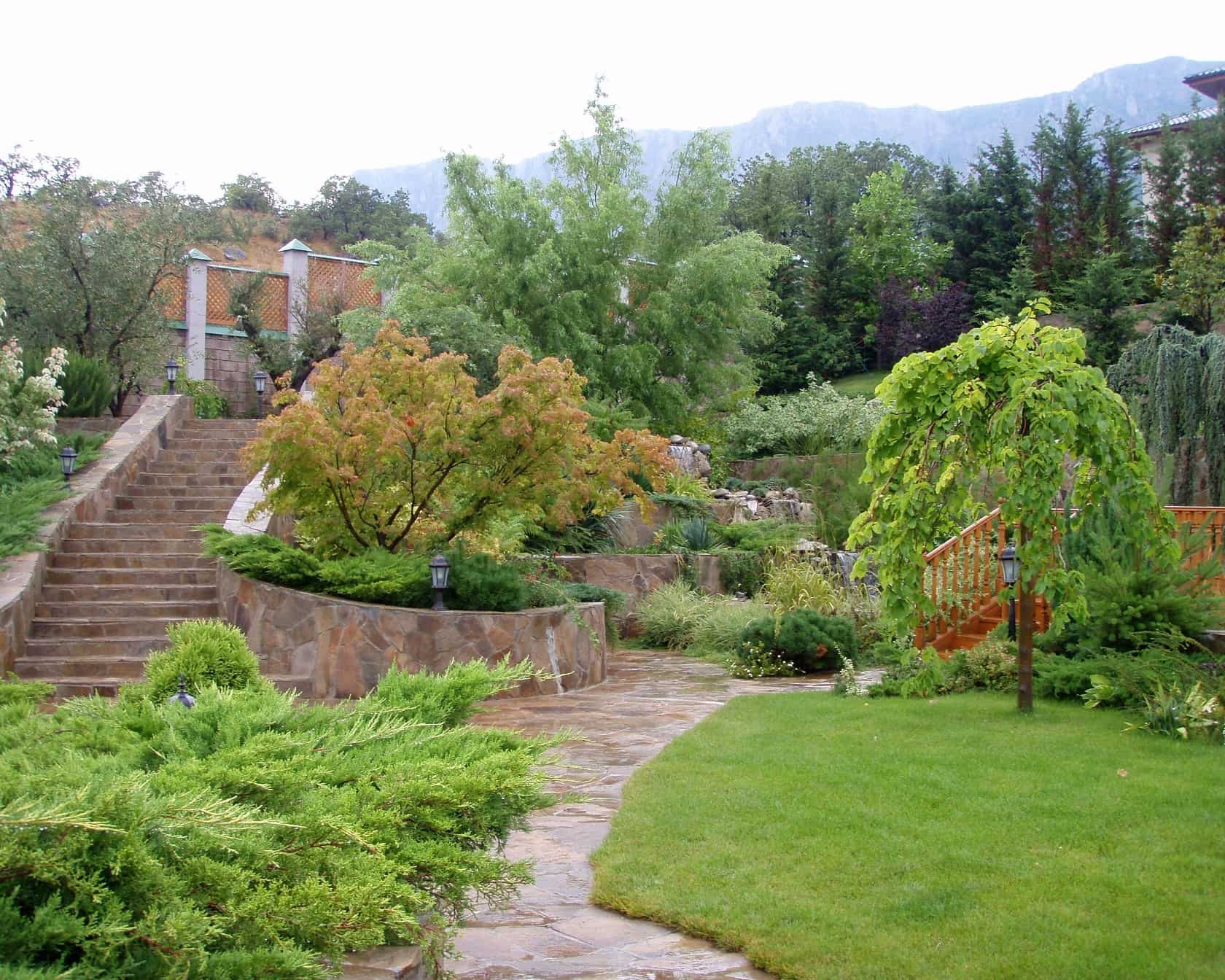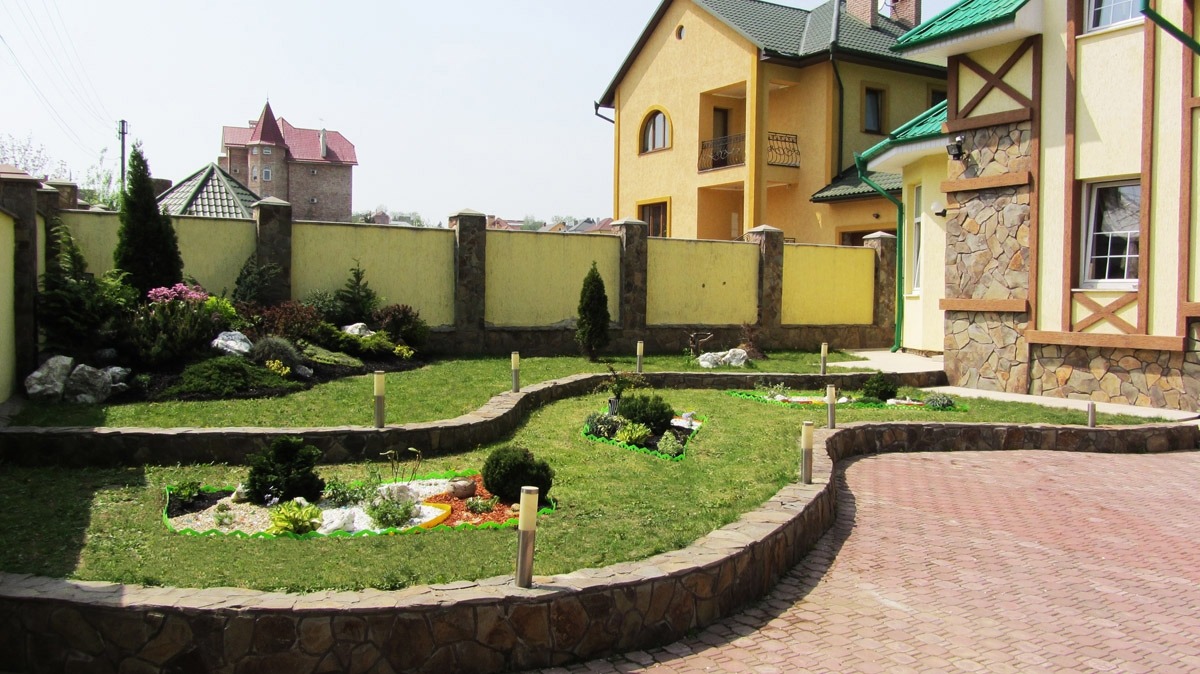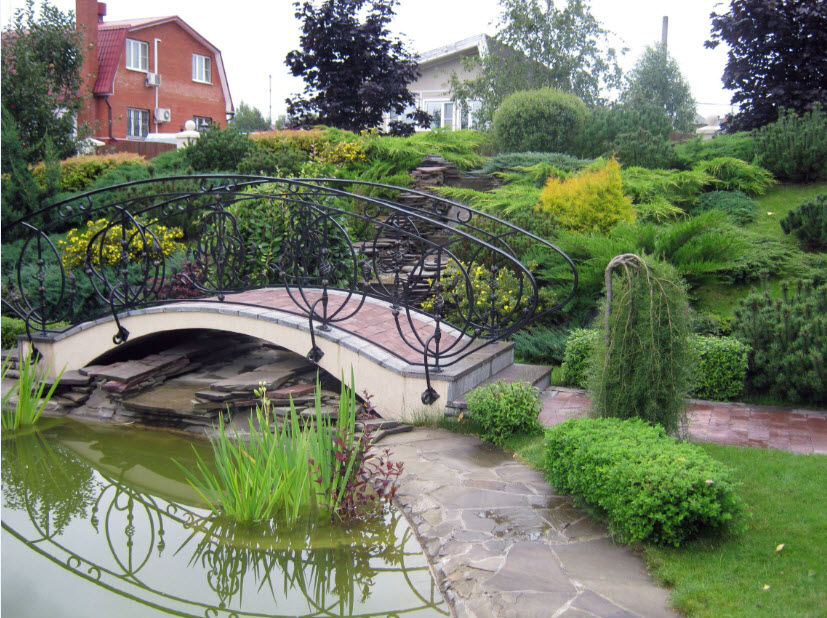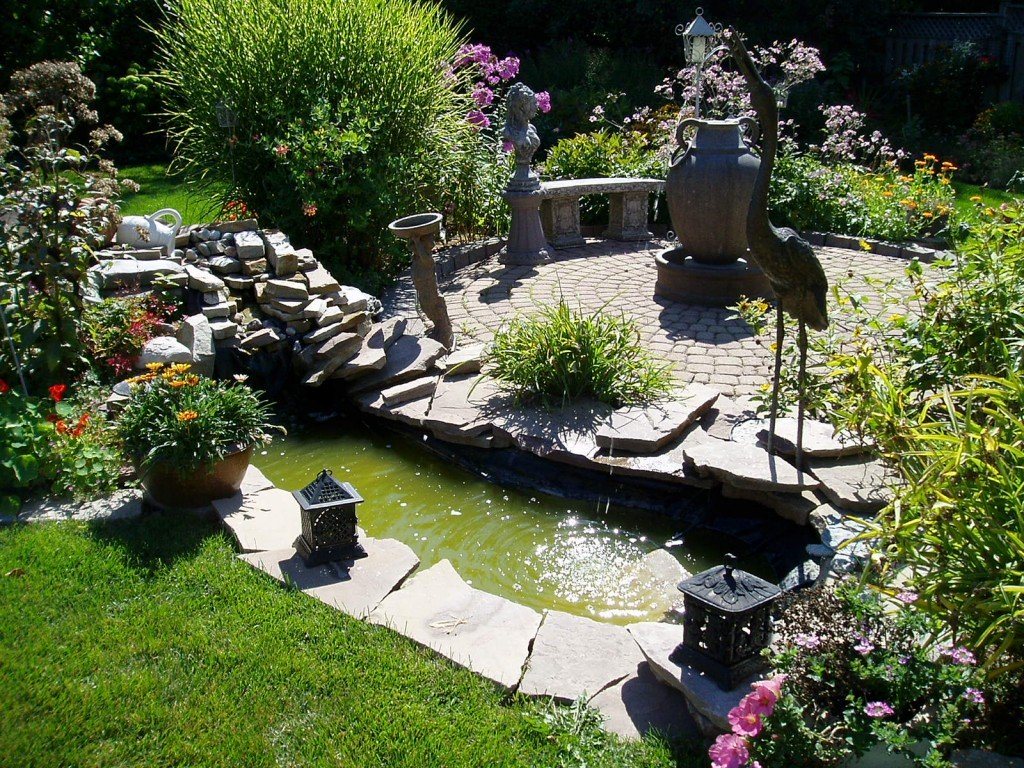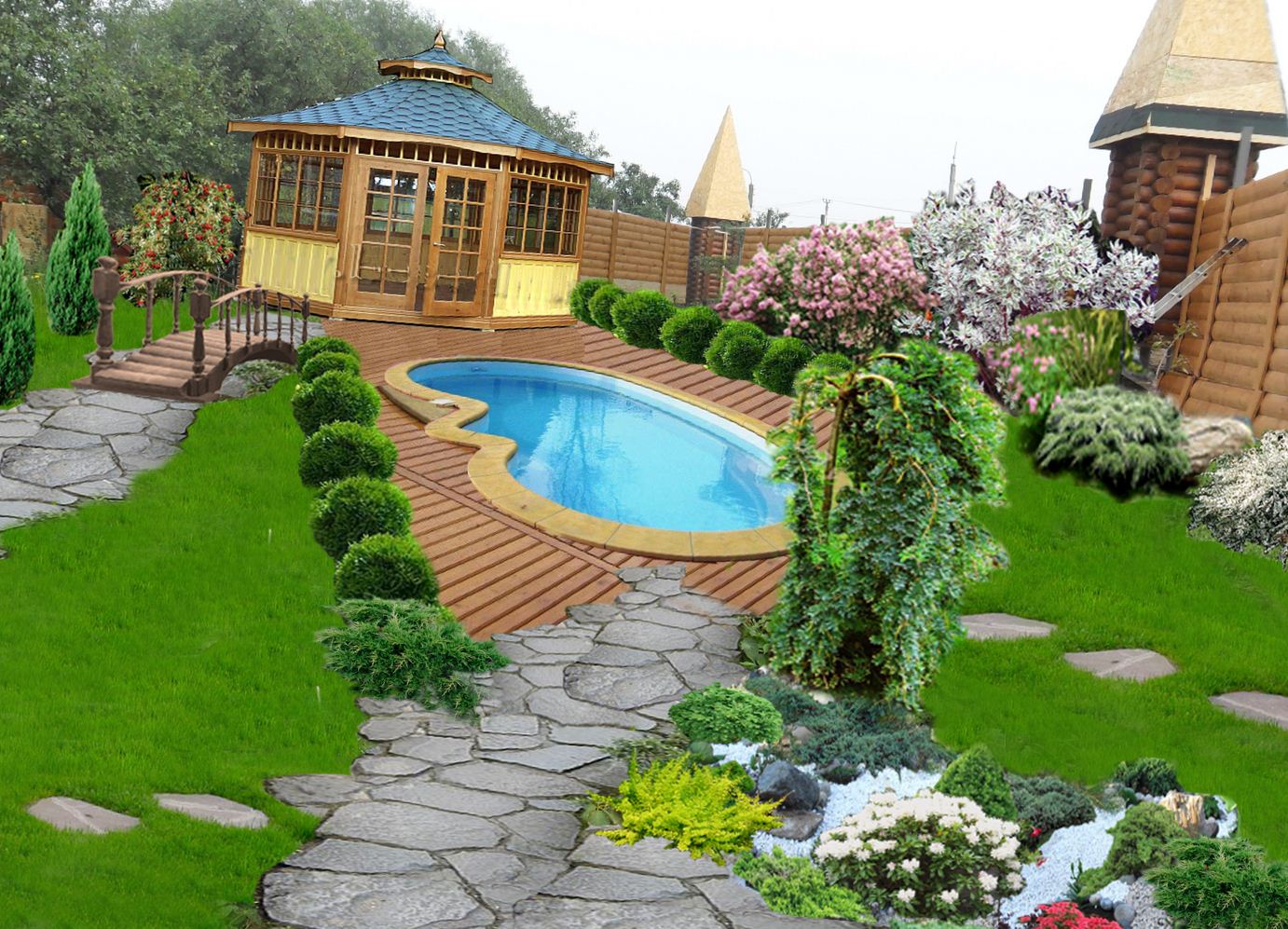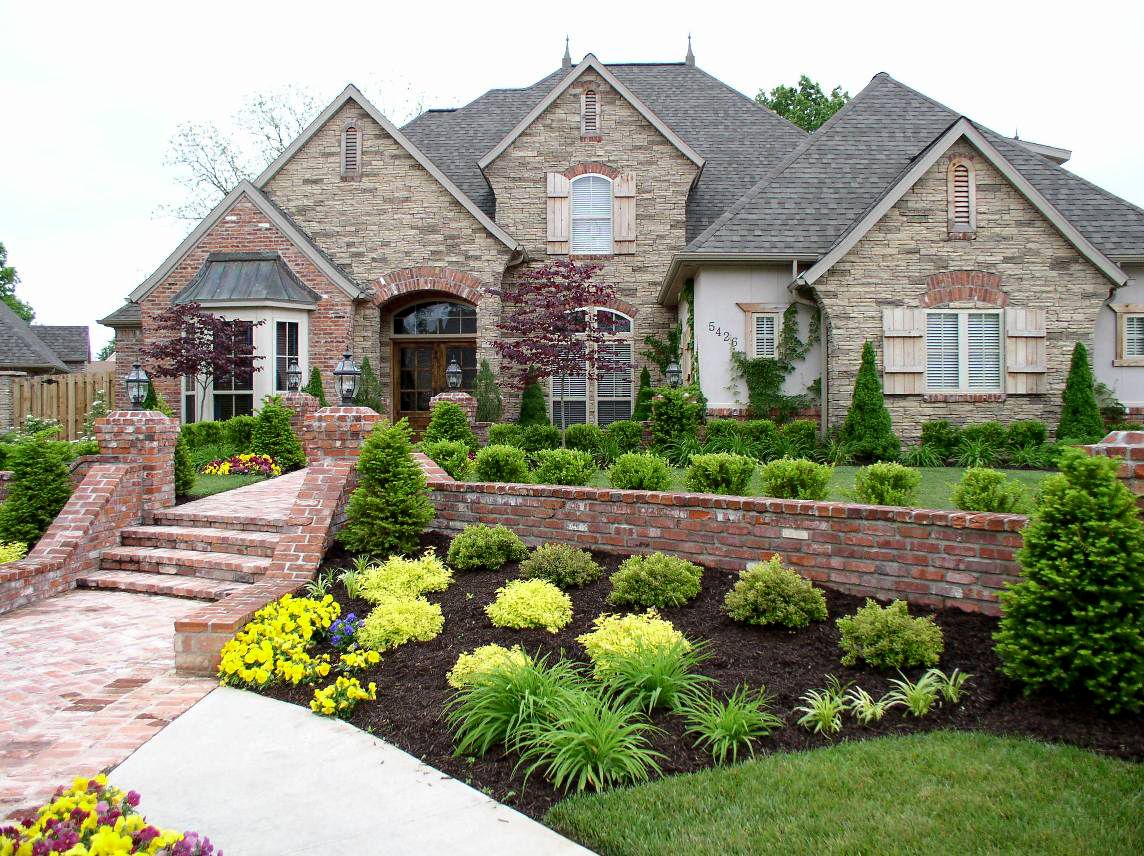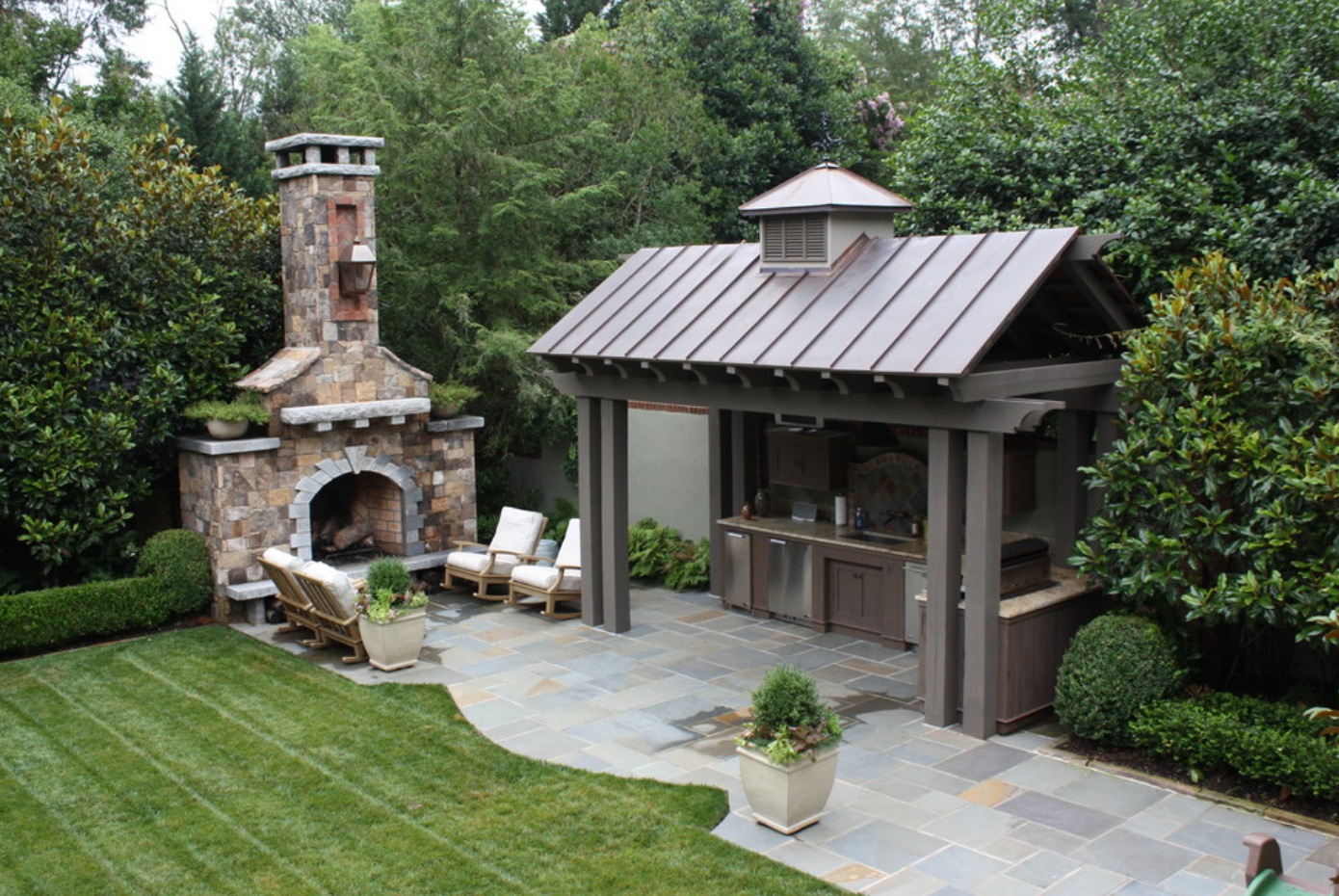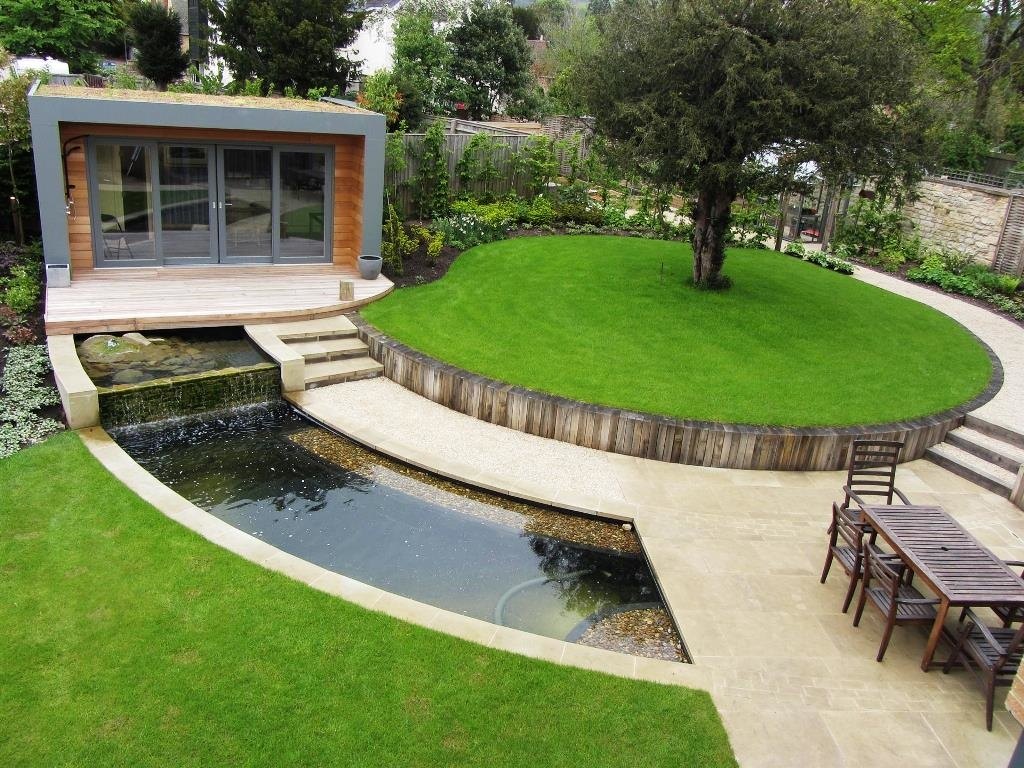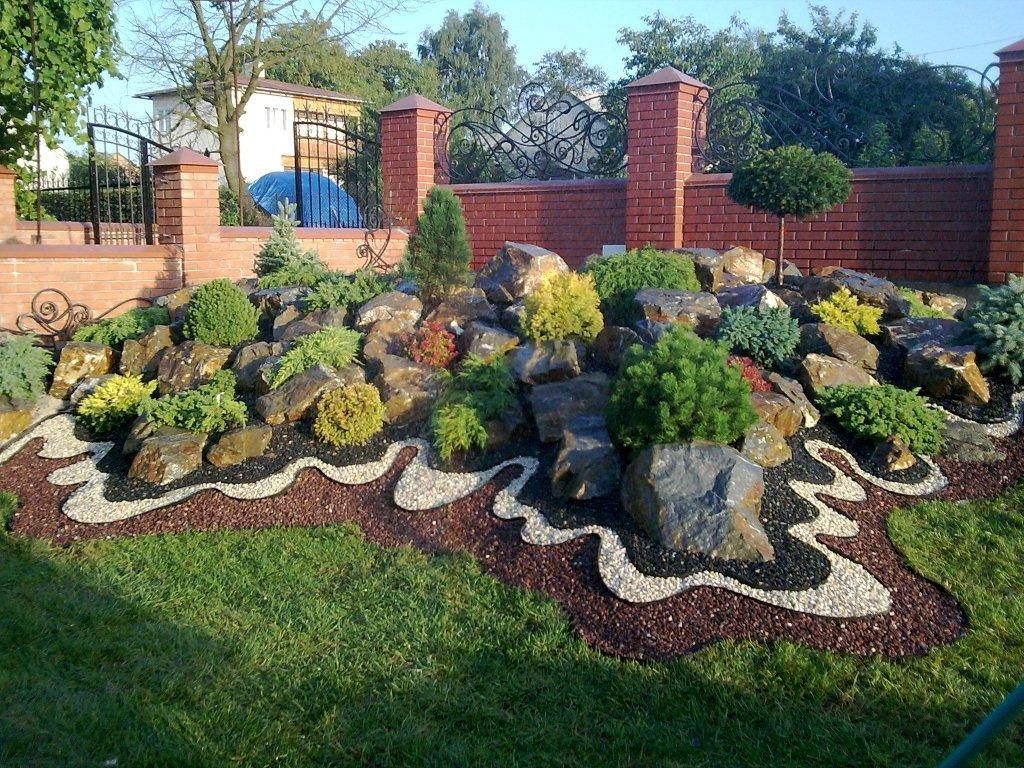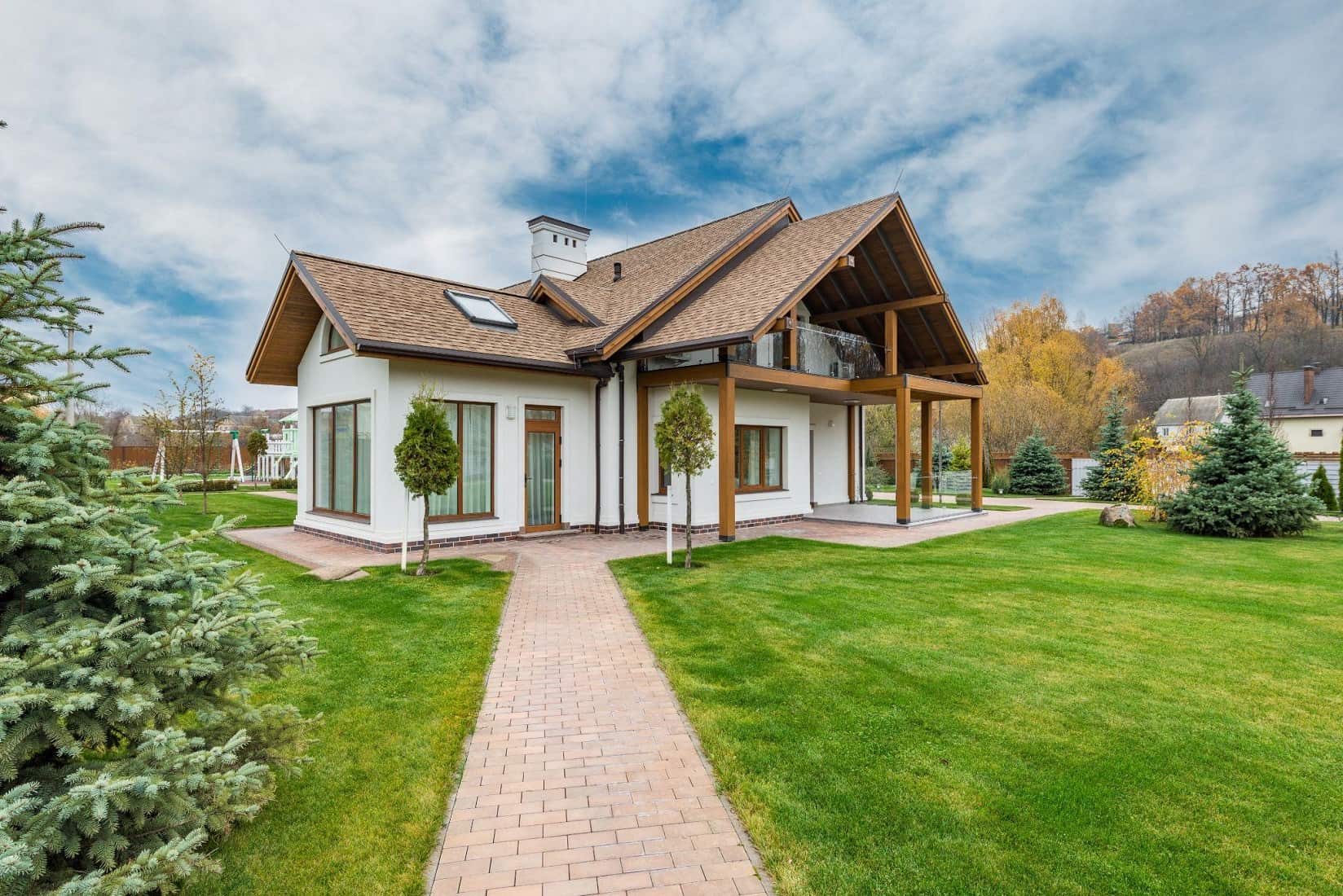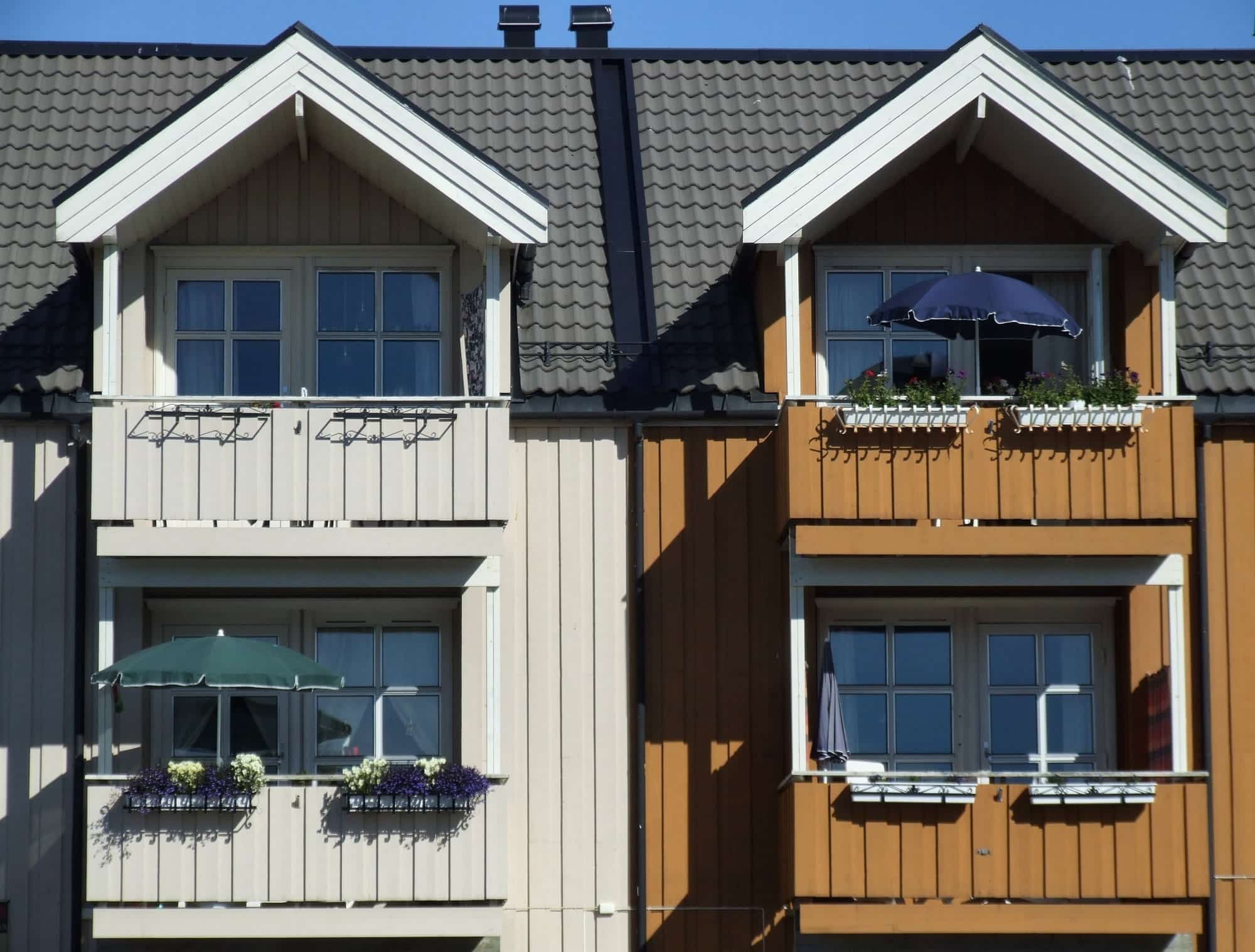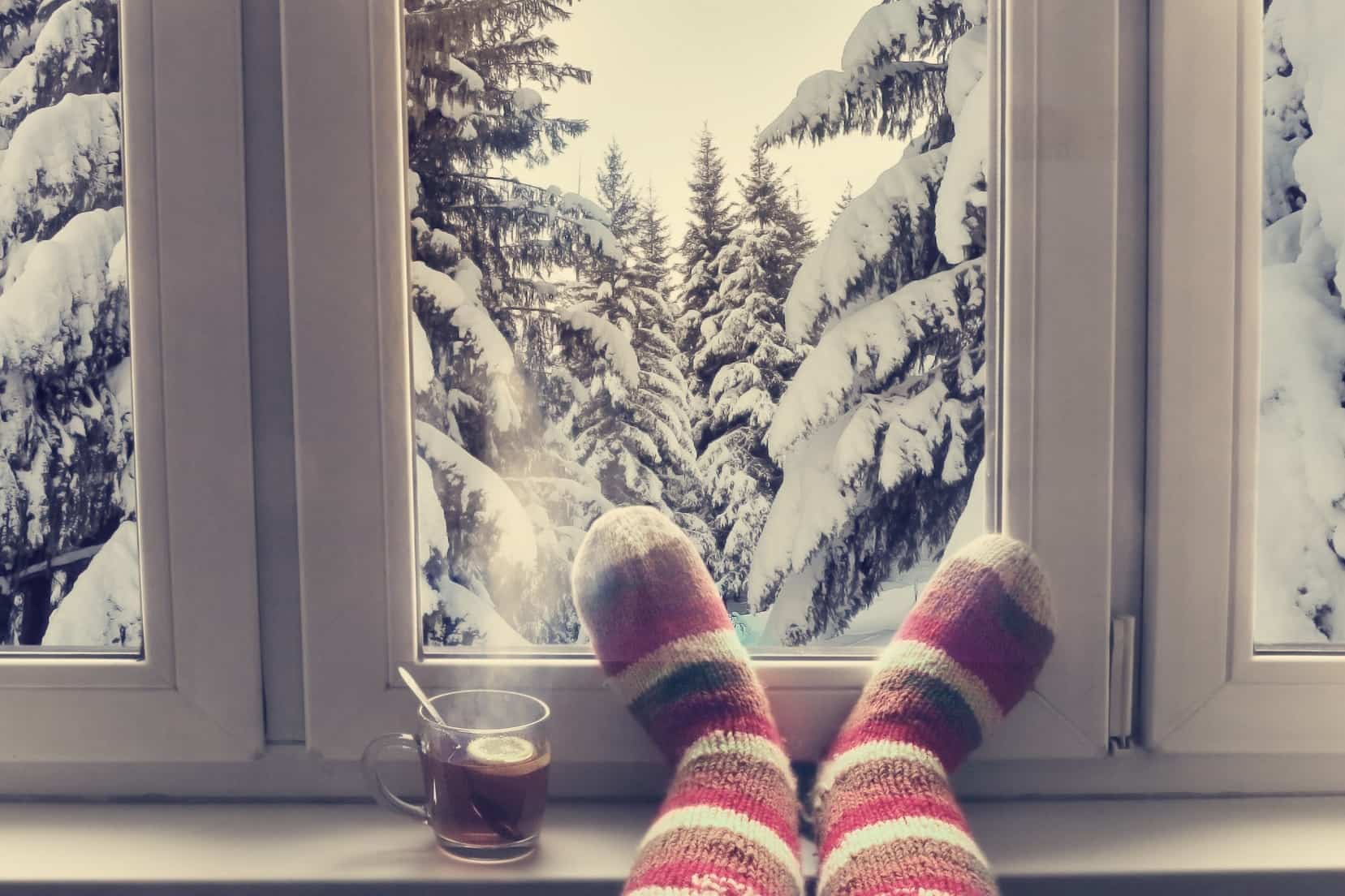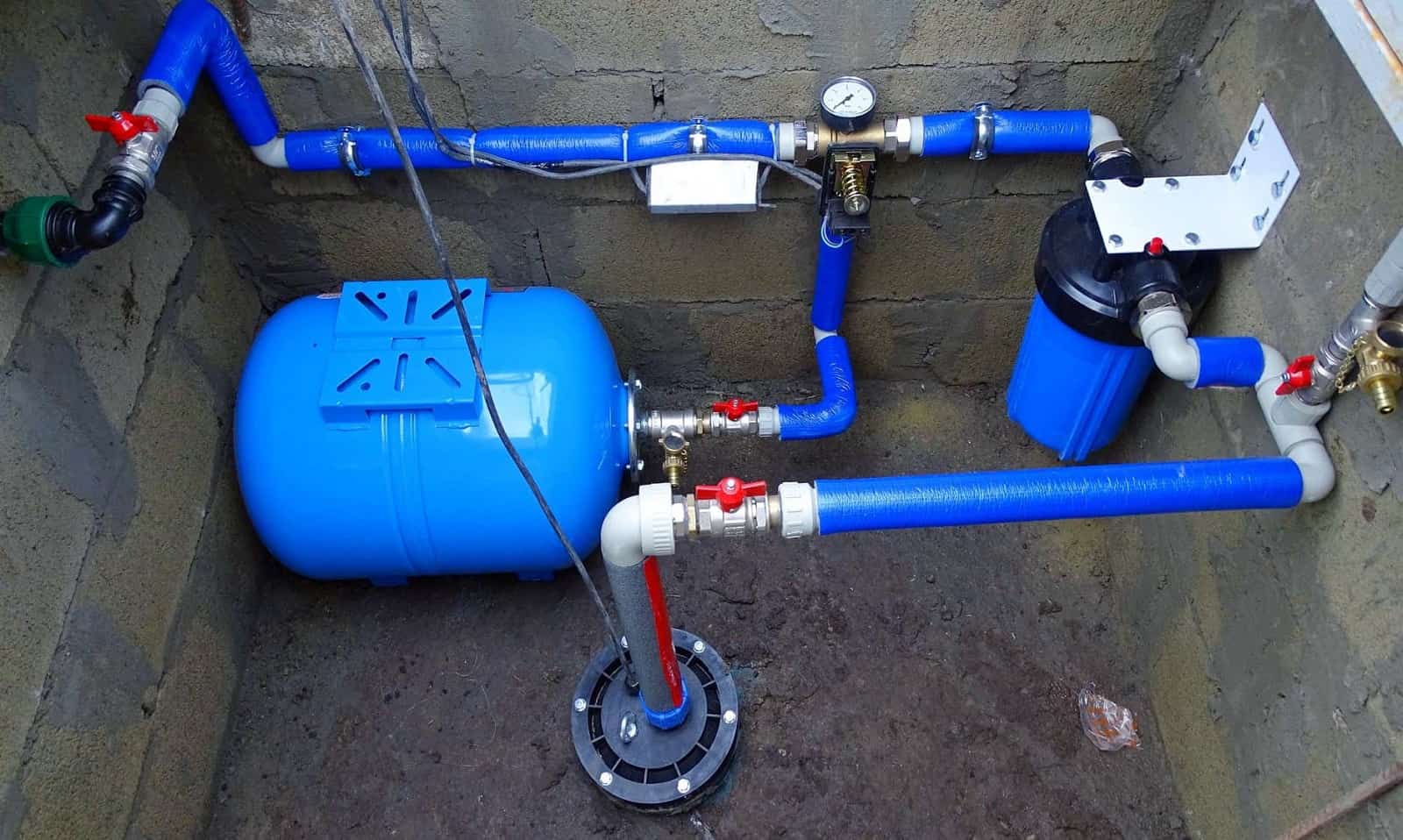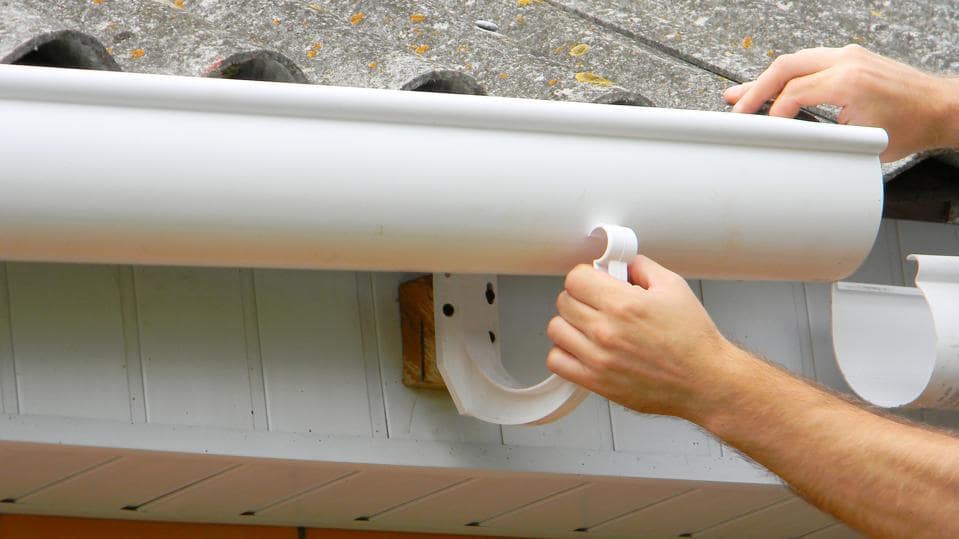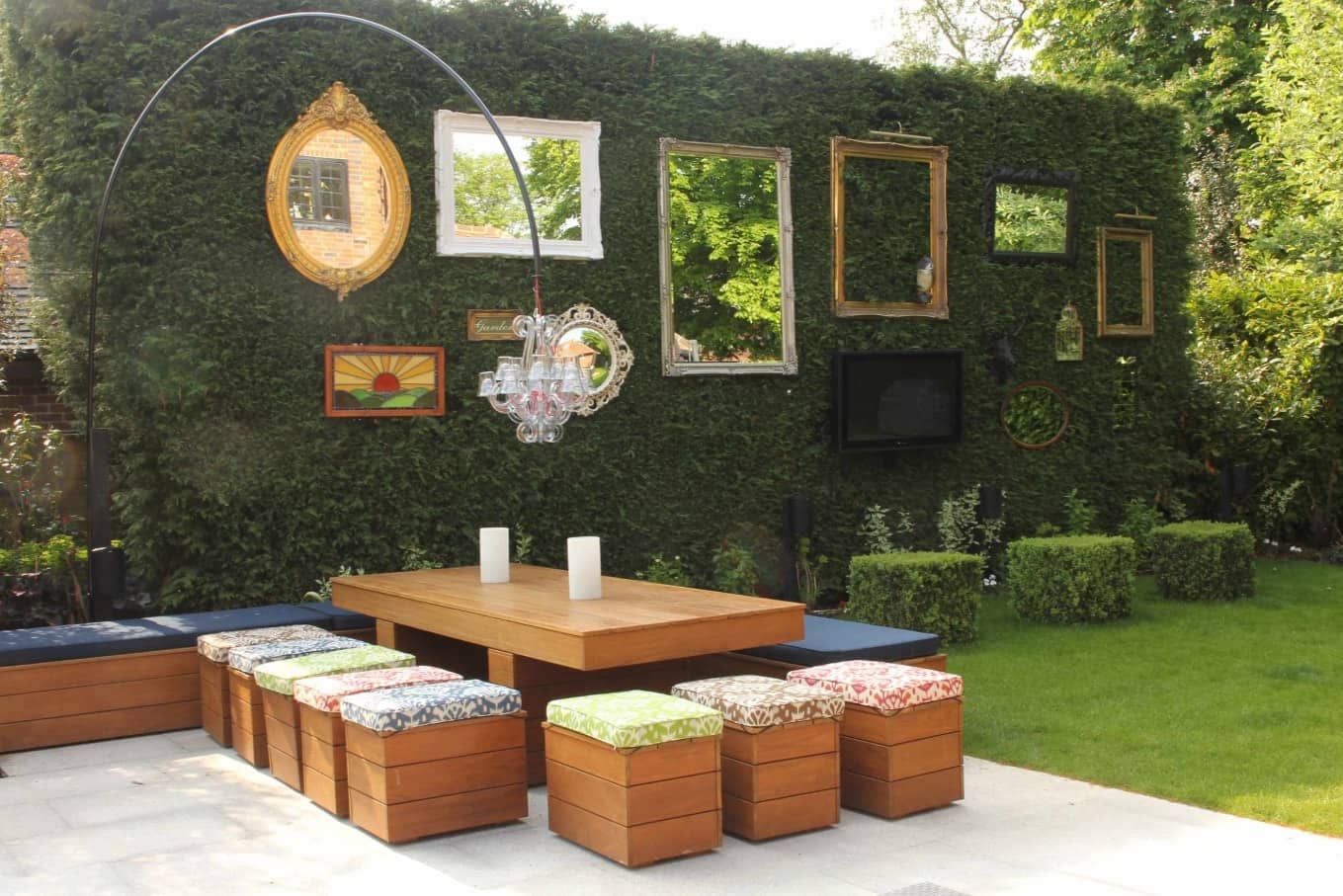Each owner of a private house wants to see the most interesting and attractive courtyards whose landscape design is not only pleasing to the eye but can also cause a touch of envy among neighbors. Now you can find many pictures of courtyards on the Internet that will amaze them with their uniqueness and originality. It is best to pay attention to the courtyards, which are perfectly combined in style with the house and other buildings on the land. You can create beautiful landscaping of the courtyard on your own, embodying your fantasies or using the ready-made option from the net. In order to create a stylish and unique courtyard, bare desire is not enough because you need to take into account all the rules, nuances, and subtleties of landscaping and zoning of space.
Contents:
Space Zoning
When choosing the optimal style for the design of the yard, you need to implement zoning techniques. In order for the yard to be convenient in operation, it must have such zones and areas:
- Special dividing paths;
- Parking for cars of guests and relatives.
- Corner for leisure (arbor or just a bench near the flowers);
- Outbuilding (Shed or house for different things);
- Flower beds;
- Artificial pond;
- Architectural works and forms.
After working on each item on the list, you can create the perfect private courtyard. However, keep in mind that the number of zones can be increased. For example, if there are children in the house, then you need to take care of the presence of a children’s playground. If the residents of the house are active people who love relaxation but do not want to travel far, then you can provide a place for a barbecue, and a pool. For lovers of oriental style, a stylish Japanese garden will become an indispensable element of landscape design.
If the territory is small, you will have to combine some zones that can be transformed into each other or easily and quickly removed if necessary.
Decorative Division of Zones
For visual delimitation of the territory, it is best to use yard gardening. Also, in order to divide the yard into zones, you can use hedges, ornamental bushes, or some interesting flowers. A playground or picnic area can be surrounded by a fence made of twigs and weaves. For a stylish design of transitions from one zone to another, it is better to use arches. And to make them look more impressive it is better to use curly flowers on them.
If there is a gazebo or terrace on the site, but if you are out of budget for them, then you can use the alternative in a form of the lightweight pergola and surround it with flowers. In open areas, you can use screens made of natural materials. Such elements always create a unique design, and it is better to make them manually. As a material, you can use bamboo mats, vine, and river shields. Such screens represent not only a decorative look but also help in zoning space, create a shadow and protect from the wind. In one of the far corners of the courtyard behind the bushes and flowers, you can place a small barn or hut, which will become complementing element of the landscape design, as well as a playing place for children.
Paths and Areas
A parking space without a special design looks boring and not very appealing. The same is right to separately located pathways leading from one building to another. Outwardly, it has a wretched appearance and can spoil the whole pleasant impression. In order to make the yard look much more interesting, it is better to use paths and platforms that are paved with different materials.
The materials to be considered are:
- Granite
- Concrete and wood slabs.
- Paving stones.
- A natural stone.
When laying a path, it is not necessary to place the material back to back. For example, between the plates, you can leave small gaps, and then fill them with sand or pebbles. Also, as an alternative, you can use garden grass and then plant small flowering plants here that will cover the slabs and give the impression that you are walking along the carpet. Among the plants, cloves and thyme are best suited for this. However, this is not important. The main thing is to use dwarf-sized plants.
The paths that are located as close as possible to the house should have a strict style, it is best to lay them out of pavers. If this option does not suit you, then you can use a brick (both white and red) or concrete. In other areas, for example, near a recreation area or closer to an artificial reservoir, a material with irregular shapes and different dimensions can be used. You can also not dwell on one specific material, but make a combination of them. When laying footpaths, the main thing is to focus on the style of the facade in such a way that everything is harmoniously combined with each other and creates a single picture.
Greening the Courtyard of a Private House
After space has been delimited, and the paths and functional places are designated, landscaping should be done. During this process, you need to choose the correct location of the plants, while taking into account their size and flowering time. Initially, you need to place trees, large shrubs. These plants will be able to create a landmark, make places with a shadow that will be protected from the wind and other weather whims.
The most spectacular and original plants are best planted separately, thus focusing on them, and highlighting these elements from the gray mass. Under one of the large trees, you can put a small bench or a circular bench. An ordinary green lawn can be decorated with bright flowers or bushes. It is best to use juniper for a restrictive border.
Often, flowers of bright colors are used for landscaping. You can create unique monophonic or multi-colored canvases, flower beds by using plant colonies. When planting flowers, you need to know their flowering period, in order to create a uniform picture, which can please look year-round. In order that the flower garden is not boring in winter, it can be diluted with conifers, which will attract attention in any weather.
If you don’t want to constantly mow the lawn, then you can arrange flowerpots with various plants in the yard. In winter, they will be removed to a warm room, and in the spring they will again be carried outside. By doing so, you can grow a heat-loving plant on your site: mandarine, lemon, cypress, and so on. You can also decorate the flower bed with vegetable and berry crops. In the summer they will decorate the territory, and in the fall they will please their taste.
In the end, a practically finished private courtyard is decorated with decorative elements, sculptures, fountains, and other tempting gizmos.
Desert Front Yard Decoration
What is a desert front yard landscape? It’s simple – this is a piece of land that looks like a desert, decorated in such a stylistic direction. For arid regions, this is an ideal choice. In fact, it is a small-care garden, which was in trend back in 2019 and retained its popularity among homeowners nowadays.
There is not much bright greenery, individual blotches, everything is minimalist, simple, but at the same time attractive in its own way – this is what the desert is.
How to equip a desert landscape in one of the zones of your site:
- The selected area must be cleared of plantings if any. You also have to get rid of the lawn, this is a completely different style of landscape design. The site is leveled.
- Prepare beautiful boulders in advance, it will be difficult to do without them. In addition, backfill is needed. It may be crushed stone or gravel. It is impractical to use sand, after rain it will be very dirty in the yard and grains of sand tend to move inside the house.
- Selected desert plants must be planted in the ground prior to backfilling. These can, of course, be succulents, Nassella desert grass, or thread-grass, thyme, feather grass, marigolds, other drought-resistant plants, and cereals. Don’t forget about prickly pears! This is a unique cactus that can hibernate under the snow. It is the decoration that will become the highlight of your man-made desert and is able to bloom very beautifully.
- The area with plants is covered with gravel or rubble. It is better not to use colored stones, everything should look natural.
- You can also decorate the deserted area with a palm tree in a tub taken out of the house, ikebana made of dried flowers and cereals, as well as with large stones half dug into the ground or simply laid on gravel. It is great to add ceramic pots of different sizes and all shades of the desert. You can also experiment with the unfolded shards as if a caravan passed through your desert recently.
- A dry stream would be a good addition to the desert landscape.
We admit that such a desert landscape has a little resemblance to a Japanese rock garden. But all this should be exactly the desert, without any special philosophy of the location of boulders and other Japanese attributes.
Do not forget about the path to your man-made desert, it can also be simply poured out of gravel or laid out from stone slabs. If you want to equip a recreation area next to a desert landscape, take a look at the Moroccan style. It’s vibrant and authentic. You can install a light fabric shed, wicker furniture, a fireplace in a metal bowl. We are sure that such a deserted but attractive site will surprise your guests and, at the same time, it will definitely not require constant maintenance.
The Slope Backyard Design
Today, landscaping on a slope can look unusual and even fabulous. Height differences, stone, winding paths, terraces – all this only decorates the uneven plot. When creating a personal landscape on such land, it is worth taking into account the peculiarities of the terrain.
The slope of the plot is not a vice, but a great way to arrange everything in a rather non-trivial way. This project in its implementation is quite different from the arrangement of a flat plot of land.
The landscaping of the slope includes the following features:
- A complex system of drainage;
- Obligatory strengthening of slopes;
- An extensive network of paths and steps;
- Careful selection of plants;
- Multipurpose layout.
Plot with heights to equip much more expensive than its counterpart with a flat surface. But such land, in the end, looks more interesting and harmonious than the standard land plots.
If you plan to do gardening, choose a place on the plot where the slope is the highest, and make terraces there. This will be the best solution to the problem of light and shade for cultivated plants.
Terracing is a major technique in the design of this site. It is terraces that help to visually smooth out differences in height, give the overall appearance of the landscape refinement.
Drainage Systems for Slopes
Creating a drainage system is an important step in improving a site on a slope. Thanks to the drainage layer, water causes much less damage to the soil, and many useful substances for plants remain in place. Let’s consider drainage methods in more detail:
Open System
The water here runs down the gutters on the surface. With this system, you can arrange ponds, small waterfalls, and fountains. This method also has an aesthetic value.
Closed System
Represents pipes with slots, which are laid underground. The system saves space, better preserves the integrity of the upper layers of soil.
The choice of system depends on the preferences of the owners of the plot, as well as the composition of the soil and its density. Internal drainage is necessary for light sandy layers, while external will be an ideal option for rocky terrain.
Plastic, metal, and rubber gutters can be used for any type of drainage system. Metal will be a long-lasting project that will last quite a while. Rubber has a shorter lifespan, but its flexibility allows you to save on additional materials for the arrangement. Plastic is considered the least durable, but it is quite affordable.
Drainage pipes during the distribution are laid not only in the ground but also spend through the material that strengthens the slopes. This way the water is guaranteed to accumulate where its location is most appropriate.
Paths and Steps
Paths on the slope are created to emphasize or reduce the steepness of the slope. The serpentine path will enhance the visual effect of elevation differences. And the paths of a linear type will smooth out the sharp differences and roughness of the ground.
Steps in the design of the sloping site make a radius or winding. In the areas between them level the ground to put there a barbecue, swings or other devices for recreation.
For a harmonious appearance of the slope of all the steps and paths is better to do single width. So the prospect of the site will look much better.
When the slope is strong and steep, the stairs are equipped with handrails, as well as lights. This method increases the overall safety of the sloping site. Materials for stairs and paths should not be slippery or uneven.
Features of Plant Selection
Most plants on a slope are deficient in sun and moisture. But the following representatives not only strengthen the sloping surface but also perfectly adapted to the difficult external conditions:
- Vertebrate – a plant with long and branched roots. It is not afraid of shading, quickly occupies the area given to it;
- Groundcover roses – flowers with magnificent buds, and creeping on the surface. Southern slopes are chosen for their planting;
- A rhododendron is an option for the north side of the plot. Easily tolerates a little waterlogging. Plants in lowlands. The rhizomes of the plant perfectly bind the soil;
- The skullcap is a grass that creates turf inca. Has several varieties, quite unpretentious in care;
- Phlox – an option that will enhance the aesthetics of any site. Does not like excessive moisture, requires planting on the sunny side;
- Wrinkled rose – a plant that can go deep with its roots for 2.5 meters. This type of rose grows excellent in width.
When selecting plants for this type of site, it is worth choosing groundcover perennials, which grow quite aggressively, forming offshoots and branches.
Trees on the slope can be planted any. In the lowlands, the tallest trees are placed, and at the top plant the more stunted ones.
The north slope of the land is ideal for planting conifers, which do not need a lot of sunlight but moisture and shade will come in handy.
The southern slope is an area where rockeries and flowerbeds will feel in their place. Sun-loving and drought-resistant plants should be placed there.
The west side is suitable for bulbous primroses. Plants and shrubs that need a milder environment should be placed there.
Badanum, aquilegia, and astilbe can be found on the slopes in the east. It is still possible to arrange a similar plant, as well as trees: lime, oak, lilac, acacia.
Landscaping Rules on a Site with a Slope
When the house is at the top of the plot, all the main groups of trees are planted there. The bottom is decorated with decorative shrubs, rockeries, low-growing trees.
Juniper, stonecrop, and perennial flowers are excellent for a rockery. All paths laid out on the site should be made with narrow borders.
All tall buildings, trees, and shrubs should not visually block the view of the house in the middle or at the top of the lot. Smooth transition from large plants to low counterparts will help to smooth the impression of the steepness of the slope. An abundance of paths arranged like a serpentine, on the contrary, will emphasize the large slope even more.
To admire the views, the terrace for recreation is best done at the top point of the site. If relaxation is intended in the shade, the lowland and northern slope is a great option for arrangement.
All waterfalls, small lakes, and ponds are placed below. Usually, such a body of water occupies a standard are (100 sq. meters). Sometimes it is made narrow, but, more often, gives a rounded shape. From the yard, small paths go down to improve the overall landscape of the slope.
Landscaping on a slope is a matter best left to professionals, as this option is considered the most complex among other types of garden design. A sloping plot can eclipse all the most interesting variations of the landscape on a flat surface, it is only worth a little effort.

